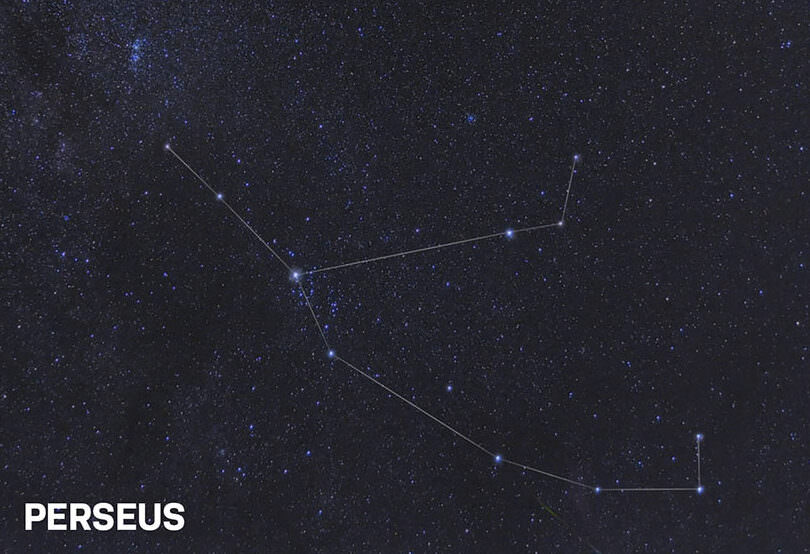Perseus constellation is an ancient and captivating constellation that offers a plethora of intriguing and easily observable celestial objects. It can be easily spotted in the sky throughout the year, making it a popular choice for stargazers. With its prime visibility in the fall season, Perseus is often referred to as a fall constellation. Ptolemy, in his catalog, depicted Perseus as one of the 48 constellations known at that time.
The myth of the Perseus constellation
The Perseus constellation possesses its own mythology, much like numerous other constellations known since ancient times. As is customary, these legends originate from ancient Greek myths, which feature a hero named Perseus. Perseus was born to a mortal woman of royal descent and the god Zeus himself.
Perseus was given the challenging task of slaying the Gorgon Medusa, a creature capable of turning anyone who met her gaze into stone. Not only did Perseus have to kill Medusa, but he also had to present her severed head as a wedding gift. Eventually, Perseus accomplished this seemingly impossible feat and decapitated the Gorgon Medusa. The constellation depicts Perseus holding her head in his hand.
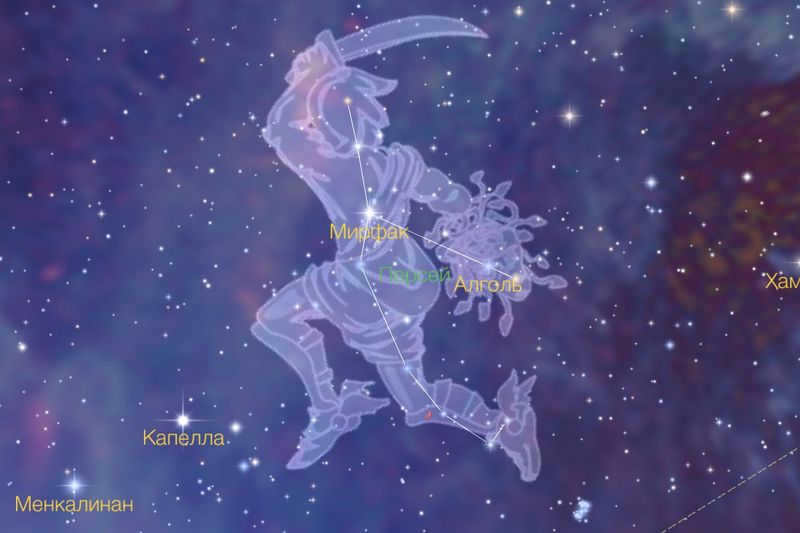
During his return journey, Perseus successfully rescued the stunning Andromeda from a terrifying sea creature and subsequently became her husband. Andromeda herself is immortalized in a distinct constellation adjacent to Perseus, while the sea monster is memorialized in the constellation known as the Whale.
The arrangement of stars known as the constellation Perseus can be observed in the sky during the autumn season. Positioned in the northeastern part of the sky, it can be easily spotted as it is not very high when the night begins. Directly beneath the highly noticeable W-shaped constellation, Cassiopeia, Perseus showcases a distinct curved shape. This celestial formation is set against the backdrop of the Milky Way, and while it may not possess any exceptionally bright stars, it still manages to attract attention.
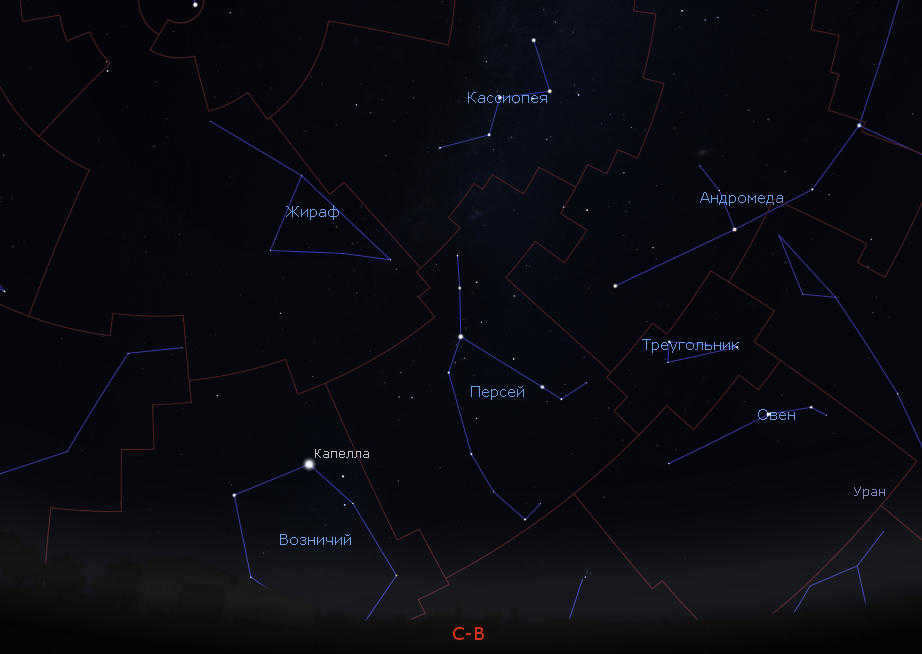
The neighboring constellations of Perseus and Andromeda are positioned next to each other in the night sky. Andromeda can be seen on the right, while the Grand Square of Pegasus stands out prominently on the right side. On the left side, you can find the Ascendant constellation with the bright Capella, which is one of the Earth’s brightest stars.
Perseus covers an area of 615 square degrees in the sky and contains approximately 90 stars visible to the naked eye, depending on the observing conditions. In Russia, Perseus is visible for most of the year, except for the months of May and June. The constellation reaches its highest point in the sky during November and December, but it can already be observed conveniently in August. September and October are particularly favorable for observing Perseus.
Noteworthy Stars in the Perseus Constellation
Within the Perseus constellation lie several intriguing stars that deserve our attention, as they possess qualities that are genuinely captivating. Without further ado, let us explore a selection of these celestial wonders.
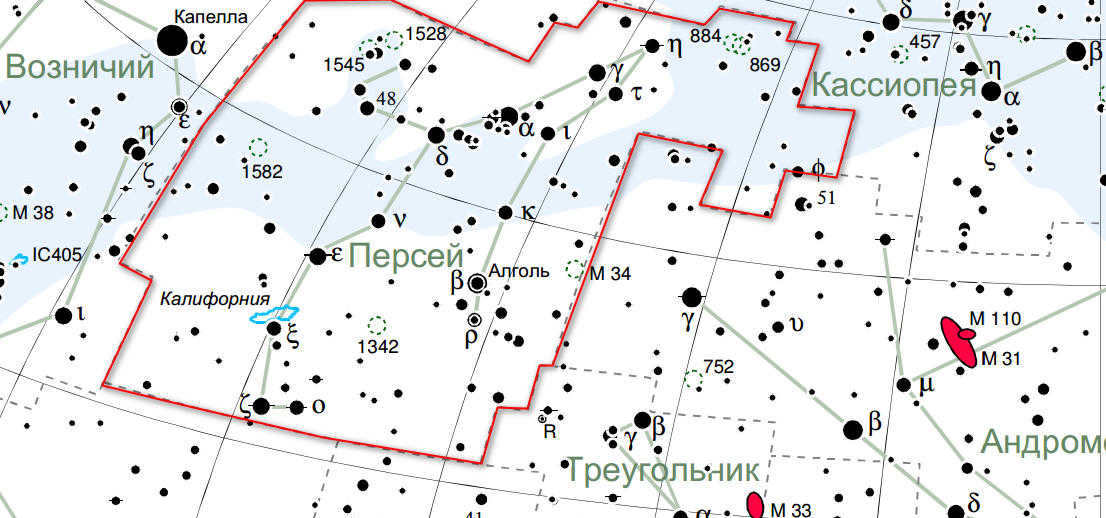
Map of the constellation Perseus from an atlas
The brightest star in the constellation Perseus is called Mirfak
Mirfak, also known as Algenib, is a yellowish-white supergiant that shines with a brilliance of 1.79m. It is 56 times larger than the Sun and 11 times heavier. Observations of Mirfak’s radial velocity have indicated fluctuations, suggesting the presence of a nearby exoplanet. This exoplanet is thought to be 6.6 times heavier than Jupiter and completes an orbit around Mirfak in just 130 days. Alternatively, the fluctuations could also be attributed to Mirfak’s rotation period, which is roughly the same as the exoplanet’s orbit.
Mirfak is located at a considerable distance from us – approximately 590 light years away. When gazing upon this celestial body, your eyes are met with the luminosity that departed from it in the year 1429. During that era, Joan of Arc initiated her campaign against the English and secured her initial triumphs. Furthermore, Russia was nonexistent, as it was then comprised of the Moscow principality and several other territories. These regions engaged in battles with the Lithuanians and faced off against Tatar invasions, with varying degrees of success. At that time, Prince Vasily held the reins of power.
Beta Perseus – Algol
This star is truly magnificent and is well-known among astronomy enthusiasts. Its fascinating story began when one of the eyes of the Gorgon Medusa, located in the constellation, started to wink. The star in this particular spot alternates between brightness and dimness, a phenomenon that was first observed by the Arabs during the Middle Ages. Consequently, it was named Algol, which translates to “devil.” The flickering nature of Algol was later documented by the Italian astronomer Montanari in 1667.
John Goodricke, an amateur astronomer from England, continued the observation of this star. He meticulously recorded the brightness of Algol every clear night between 1782 and 1783, eventually discovering its strictly periodic changes.
Algol is classified as a variable star, with its brightness fluctuating between 2.12 and 3.39m over a period of 2.867 days. John Goodricke eloquently described it as follows:
“If it were not too premature to hypothesize about the origins of the fluctuation, I might propose the existence of a substantial celestial body orbiting around Algol.”
As it turns out, he was completely accurate. Algol is classified as a variable star of the eclipsing variety, and serves as the leader in its class. Not only that, but it was the initial eclipsing variable ever discovered. It consists of a compact binary system, with the plane of their orbit positioned in such a way that we perceive it almost edge-on. As a result, these two stars cyclically obscure each other, leading to changes in luminosity. Due to the proximity of this pair, we observe it as a solitary flickering star.
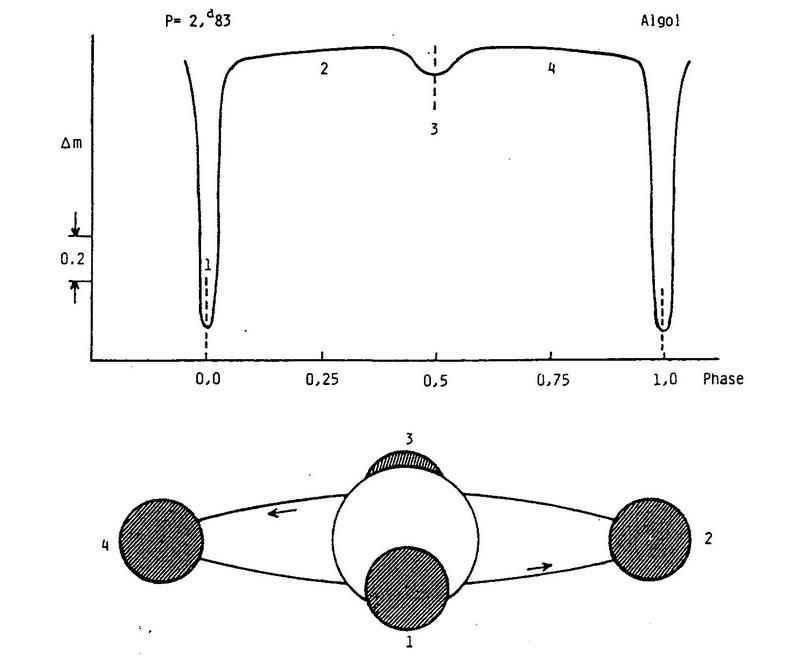
A diagram illustrating the fluctuating brightness of Algol caused by the movement of its components.
Although there are now thousands of known stars of this type, Algol was the first to be discovered. This particular star is highly suitable for observation purposes as it can be easily seen with the naked eye, exhibits a significant range of brightness variations, has a short orbital period, and remains visible throughout most of the year. Consequently, it serves as an excellent model for those interested in observing variable stars.
Algol is, in fact, a triple star system. The two primary stars form a closely-knit pair, with a separation distance of only 0.062 astronomical units – approximately 16 times smaller than the distance between the Earth and the Sun. The third star orbits around the common center of mass at a distance of 2.69 astronomical units and completes a full revolution every 681 days. Collectively, these stars possess a combined mass equivalent to nearly 6 times that of the Sun.
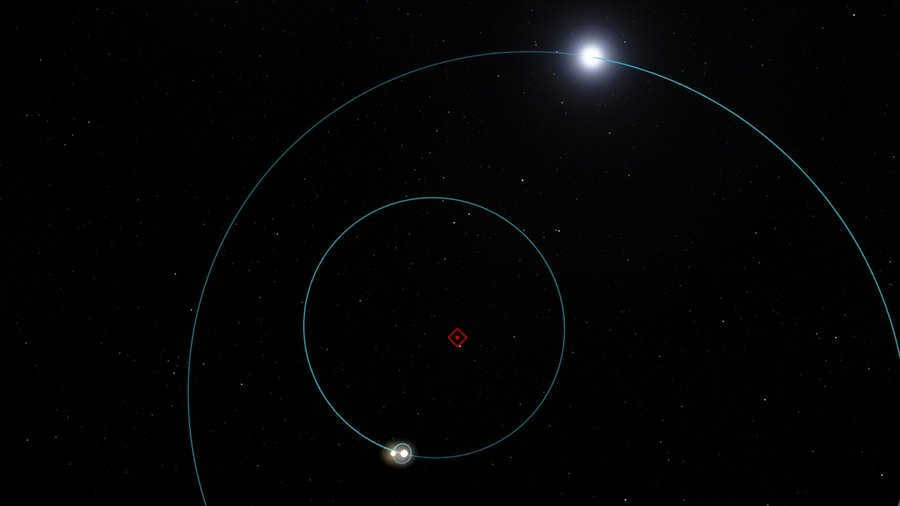
The Algol system is depicted in the image above. It consists of a close binary pair and a third component. The close binary pair orbits around a common center of mass, while also rotating around another center of mass.
Rho Perseus: A Unique Semi-Regular Variable Star
Within the constellation Perseus, there exists another fascinating variable star known as Rho (represented by the Greek letter “ro”). Unlike Algol, Rho Perseus does not strictly adhere to a periodic pattern when it comes to varying its luminosity. Instead, it exhibits sporadic fluctuations with a touch of periodicity. When observing its long-term chart, a cycle with a duration of 33-55 days becomes apparent, while an even longer interval reveals a 1100-day cycle. As a result, Rho Perseus falls into the category of semi-regular variables.
Rho Perseus is situated approximately 317 light years away from our planet. It stands as a red giant, boasting a surface temperature of 3460 K, which is significantly cooler compared to the Sun. However, estimates indicate that it is 157-164 times larger than our Sun and weighs three times as much.
The star in ρ Perseus is a youthful celestial body, having a tender age of merely 440 million years. However, despite its youth, it has already exhausted its hydrogen fuel and is currently undergoing the process of burning helium. Once the helium is depleted, the star will shed its outer layers and transform into a scorching white dwarf. Similar destiny awaits our very own Sun, although in the case of ρ Perseus, these cosmic events unfold not over billions of years, but rather within the span of mere millions.
This Perseus is an exquisite duo
Another intriguing celestial body in the constellation of Perseus is denoted by the symbol η (Greek “this”). It is a binary star that can be easily observed using any telescope. The primary component has a magnitude of 3.8 and appears orange, while its companion has a magnitude of 7.9 and appears blue. The separation between them measures 29 arcseconds.
This pairing is truly captivating to behold. Typically, such orange-blue duos have the ability to captivate your gaze for an extended period of time, so make sure to take a moment to observe it.
Star clusters and nebulae in the constellation Perseus
Perseus offers a variety of fascinating clusters and nebulae for observation. Some of them can be easily spotted using binoculars or a small telescope.
The double cluster of Perseus, known as χ and h
One particularly stunning feature in this constellation is a double star cluster designated as χ and h Perseus. Each letter represents an individual dispersed cluster.
These clusters are visible even without any optical aid in the upper part of the constellation, near Cassiopeia. However, they become even more captivating when viewed through binoculars. In a telescope with low magnification, these clusters are truly magnificent – each one is adorned with a multitude of stars. Despite their scattered nature, these clusters maintain a compact appearance due to the abundance of stars within them.
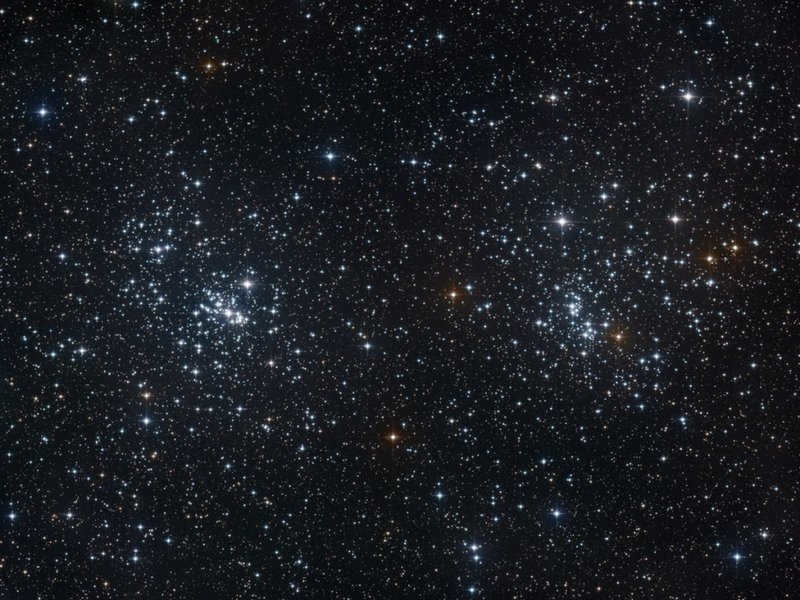
Both the χ and h clusters within the Perseus constellation can be seen in the same view.
The h cluster shines with a magnitude of 5.3 and contains approximately 350 stars. It is situated around 7000 light-years away and has a diameter of about 56 light-years.
On the other hand, the χ Perseus cluster also has a brightness of 6.1 but is slightly larger, spanning across 77 light-years. It has a slightly lower star count, around 300. This cluster is also located around 7000 light years away.
It is highly recommended to observe this double cluster with binoculars or a telescope and appreciate its stunning appearance. Additionally, it is an easy target to locate, even for beginners who will only need a few minutes at most.
Dispersed group M 34
Situated in the eastern region of the constellation, this scattered star cluster possesses a magnitude of 5.5m and can be effortlessly located using binoculars. When observed through a 120mm telescope, approximately 50 stars become visible within its expanse, totaling to about 100 stars overall. This cluster unveils its enigmatic qualities with heightened magnification, making it one of the most accessible clusters to study. Simultaneously, it offers a visually striking display.
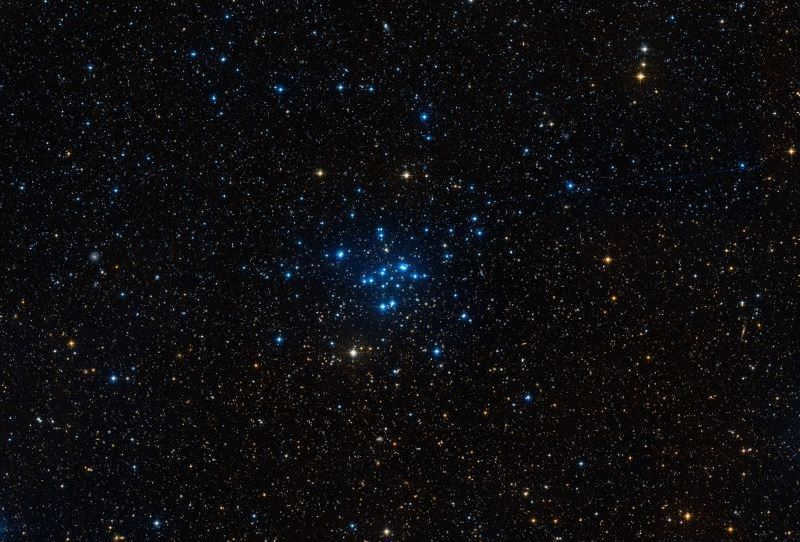
The Perseus constellation contains the M 34 cluster.
The M 34 cluster is situated at a distance of approximately 1400 light years. It was first observed by the Italian astronomer Giovanni Battista Godierna prior to 1654.
The “Little Dumbbell” Nebula, also known as M 76.
This planetary nebula bears a resemblance to a dumbbell in some aspects and was initially believed to be two separate nebulae. It was discovered by Pierre Meschen in 1780 and was subsequently included in Messier’s catalog as number 76. The nebula is located in the eastern region of the Perseus constellation, close to the border with Andromeda.
The Little Dumbbell Nebula is relatively dim, with a luminosity of 10.1m, and is considered one of the more challenging celestial objects to view in the Messier catalog. Furthermore, due to its size, it is best observed using a medium-sized telescope. The binary lobes can be discerned using an 8-inch instrument, with the brighter section measuring 65 arc seconds in diameter and the surrounding halo spanning 290 arc seconds.
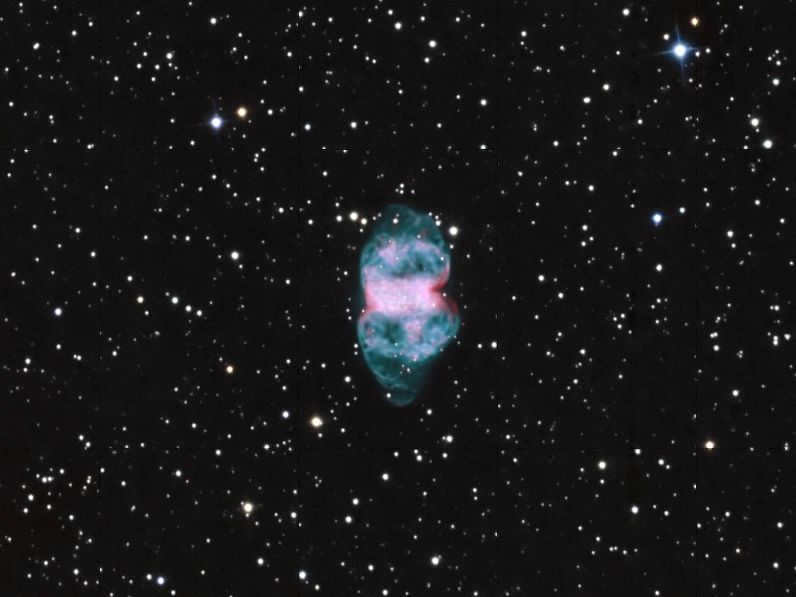

The Nebula M 76 is commonly known as the “Little Dumbbell” nebula.
Similar to other planetary nebulae, the formation of this nebula occurred when a star shed its outer layer. At its core, there is a white dwarf star with a luminosity of 15.9m and a surface temperature that can reach up to 60000 K. The gas within the nebula has a temperature of 88400 K and is expanding at a rate of 42 km/s. This nebula is located approximately 2500 light years away.
The California Nebula
The California Nebula is a well-known emission nebula located in the constellation of Perseus. It is named after its resemblance to the shape of the US state of California. The nebula is illuminated by the bright star Xi Persei, which is responsible for its reddish glow. The California Nebula is a popular target for astrophotographers due to its vibrant colors and interesting structure. It is often captured using narrowband filters to enhance the contrast between the different gases present in the nebula. The California Nebula is a stunning example of the beauty and diversity of the cosmos.
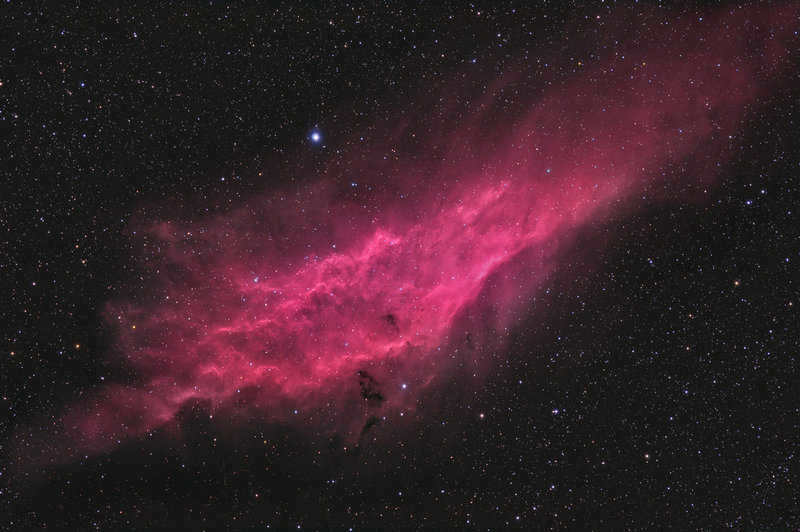
The California Nebula can be found in the Perseus constellation.
The NGC 1499 diffuse nebula has a shape that is reminiscent of the state of California in the United States, which is why it was named as such. It is a relatively simple cloud of gas, composed mostly of hydrogen, and it is situated about 1500 light-years away from our location. It spans a distance of approximately 100 light-years.
The NGC 1333 nebula: a breathtaking celestial phenomenon.
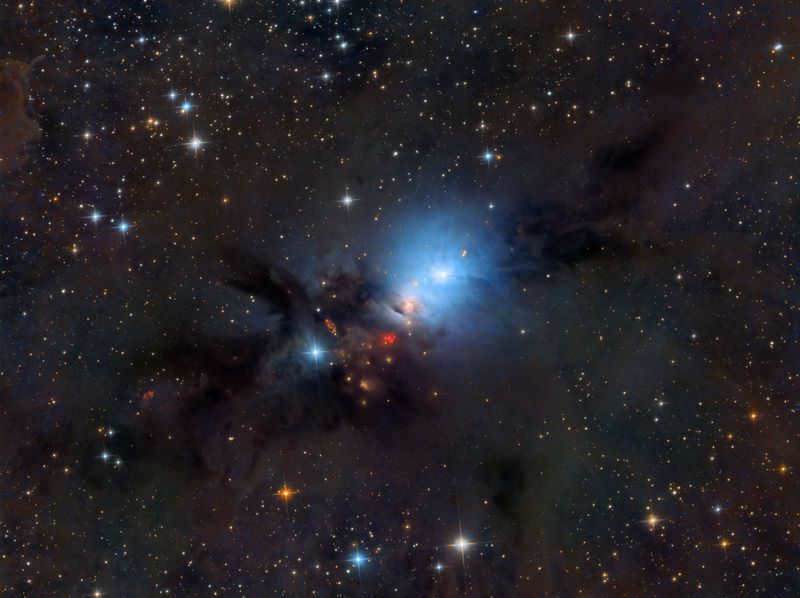
Situated at a distance of 1,000 light years, this constellation known as Perseus exhibits a captivating bluish tint. Rather than emitting light independently, it relies on the illumination from surrounding stars, owing to its composition of gas and dust. Within this nebula, new stars are actively taking shape, radiating from within. However, the visibility of the stars inside the nebula is impeded by dense clouds of dust.
Meteor Showers in the Constellation Perseus
The constellation Perseus is famous for being the radiant point of the Perseids meteor shower. This meteor shower has been observed since 1834 and occurs annually from July 17th to August 24th. The peak of the shower is on August 12th, during which you can see up to 60 meteors per hour.
The Perseids meteor shower is caused by the numerous dust particles that make up the tail of comet 109H/Swift-Tuttle. This comet passes close to Earth every 135 years, but its tail intersects with Earth’s orbit every year, resulting in a dazzling display of shooting stars. These tiny dust and ice particles, about the size of a grain of sand, enter Earth’s atmosphere at speeds of 150,000 to 200,000 kilometers per hour and burn up spectacularly. Sometimes, they even create a meteor train, leaving behind a trail of glowing light.

The Perseid meteor shower is known for its abundance of small meteors and stunning fireballs.
Whenever a comet approaches, the activity of the Perseid meteor shower increases significantly. For example, when the comet came close to Earth in December 1992, the meteor shower produced up to 500 meteors per hour. The next time the comet is expected to be near Earth is in 2126.
Furthermore, the Perseids are remarkable for having the highest number of bright fireballs compared to other meteor showers.
Despite its relatively small size, the Perseus constellation is home to a variety of fascinating celestial objects. Within this constellation, you can find variable stars, stunning double pairs, nebulae, and star clusters. We have highlighted some of the most notable objects, many of which can be observed using amateur telescopes or even binoculars. However, there are also galaxies present in Perseus, although they are more challenging to observe and require advanced equipment typically not possessed by amateur astronomers.
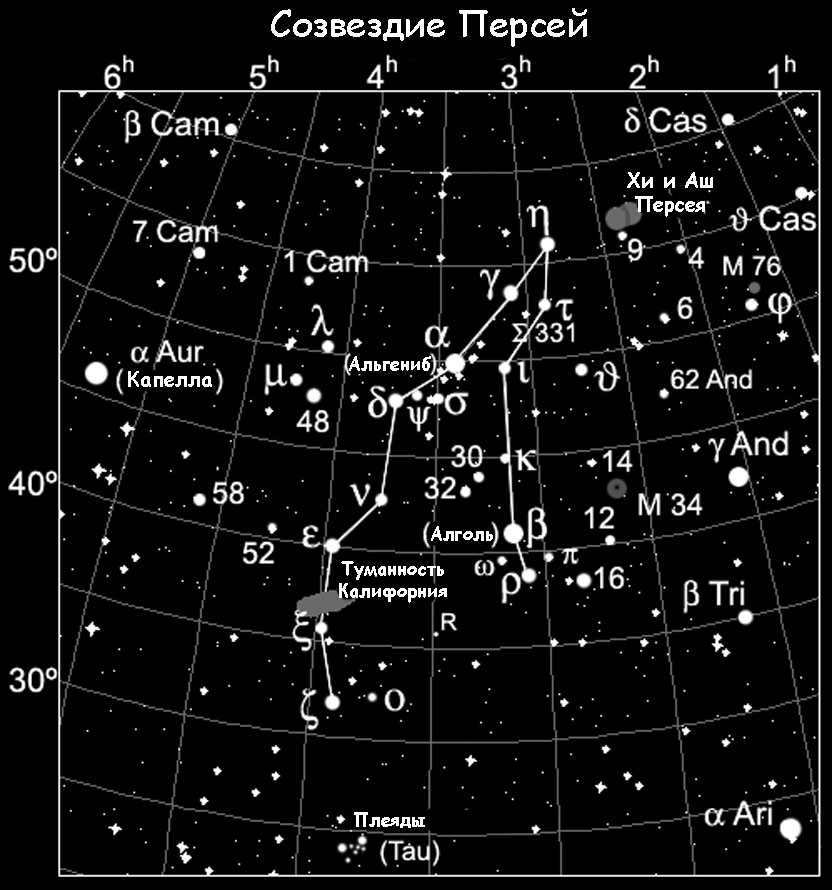
Perseus constellation was first observed by the ancient Greek scientist Ptolemy in the 2nd century.
Perseus in the celestial sphere
With an area of 615 square degrees, Perseus is ranked as the 24th largest constellation among the other constellations.
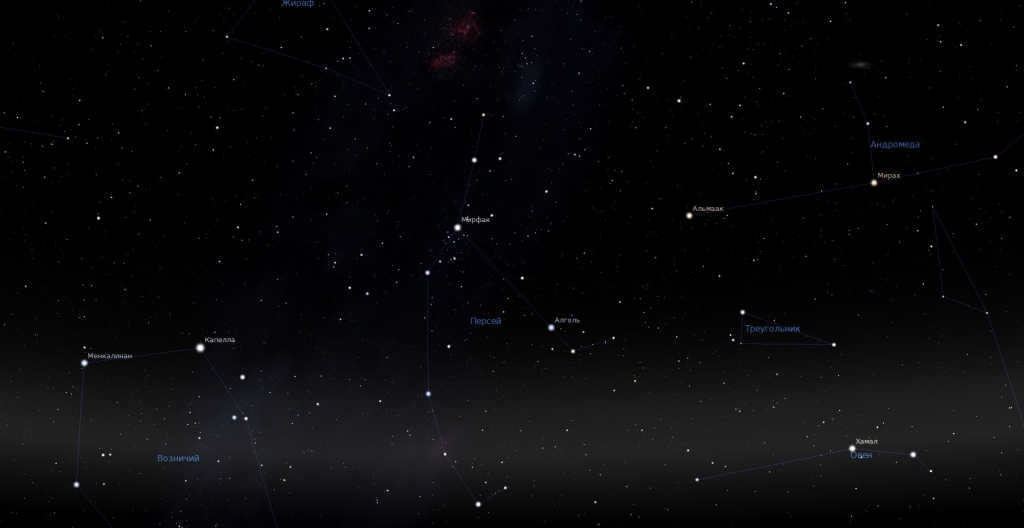
The Perseus constellation can be observed in the planetarium program.
This particular constellation is primarily located within the Milky Way, making it easily visible against the bright white sky. In close proximity to Perseus, you can also spot other zodiacal constellations such as Aries and Taurus, as well as Cassiopeia, Andromeda, and the Ascendant. Under optimal viewing conditions, with no moonlight and clear skies, it is possible to see around 90 stars within the Perseus constellation without the need for any optical aids.
The optimal period for observing the Perseus constellation is during the late autumn season, particularly in the month of November. Nevertheless, individuals residing in the middle latitudes of Russia have the opportunity to observe this celestial formation throughout the year, with the exception of the months of May and June when Perseus becomes partially obscured in the northern region beyond the horizon. However, by patiently anticipating the arrival of November or December and directing one’s gaze towards the mesmerizing expanse of the starry heavens, anyone can easily identify a distinctive irregular polygon shape composed of the 11 most luminous stars within the Perseus constellation. Truly a captivating sight to behold.
Perseus’ most brilliant exemplar
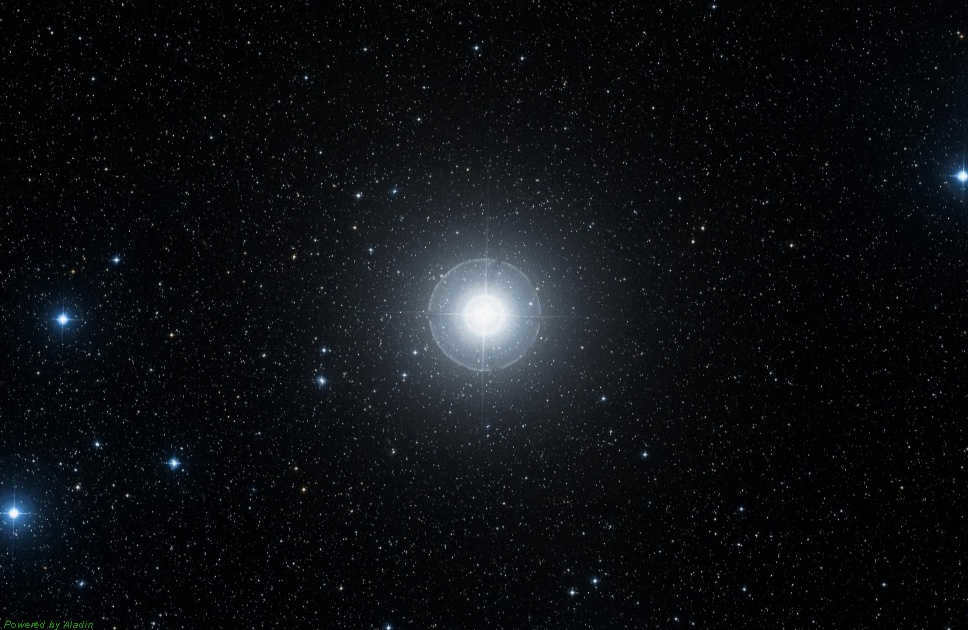
Photograph of Mirfak or Alpha Perseus
Now is the moment to discuss the celestial bodies within the Perseus constellation that warrant the utmost attention from stargazers. The initial focus should be on Alpha Perseus, also known as Mirfak (which translates to “elbow”) or Algenib (both derived from the Arabic word for “side”). This star is a giant within the yellow-white spectrum. From our vantage point on Earth, Mirfak is situated at a distance equivalent to 590 light-years. Its temperature matches that of the sun, which is approximately 5000K.
Mirfak is a binary star system. It has a visual magnitude of 1.80m. Alpha Perseus is classified as an F5 Ib star. Mirfak’s companion has an apparent magnitude of 11.8m and is located at an angular distance of 167 arc seconds from the primary star. In the constellation of Perseus, there is a cluster known as Mirfak, which is also referred to as Melotte 20 and Collinder 39. Mirfak is also host to its own exoplanet, a hot gas giant with a mass equivalent to 6.6 times that of Jupiter. The exoplanet has an orbital period of approximately 128 days.
An eclipse-resistant luminary that has become a standard
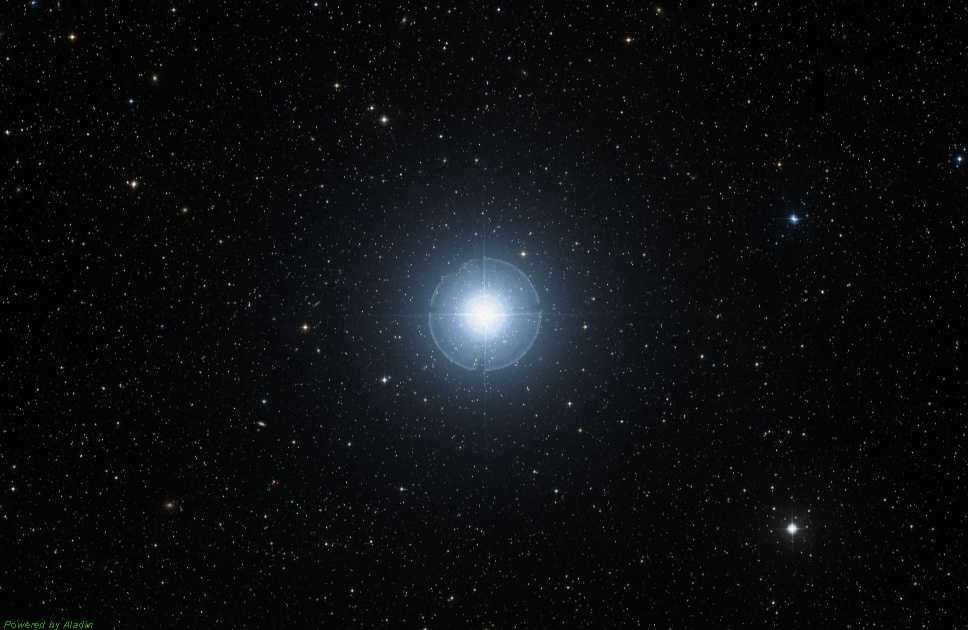
Algol A and Algol B comprise a fascinating star system in the constellation of Perseus. Not only is it a multiple system, but it is also recognized as the brightest eclipsing variable celestial object. Also known as Beta Perseus, Algol A and Algol B form a closely-knit pair with a separation of 0.682 astronomical units. These two stars orbit around each other with a period of approximately 2.9 days, resulting in periodic variations in their brightness as they eclipse one another.
Additionally, there exists a third element within this arrangement – Algol C. The third celestial body, Algol C, undergoes a rotational motion in relation to the center of mass of the other two entities, albeit with a considerably lengthier time period. Specifically, this period spans nearly two years, or 1.86 years to be exact. The extended duration of Algol C’s revolution is a direct consequence of its significant distance from the other two stars, measuring an impressive 2.69 astronomical units. It is worth noting that the combined mass of all three stars within this system is comparable to nearly six times the mass of our own sun.
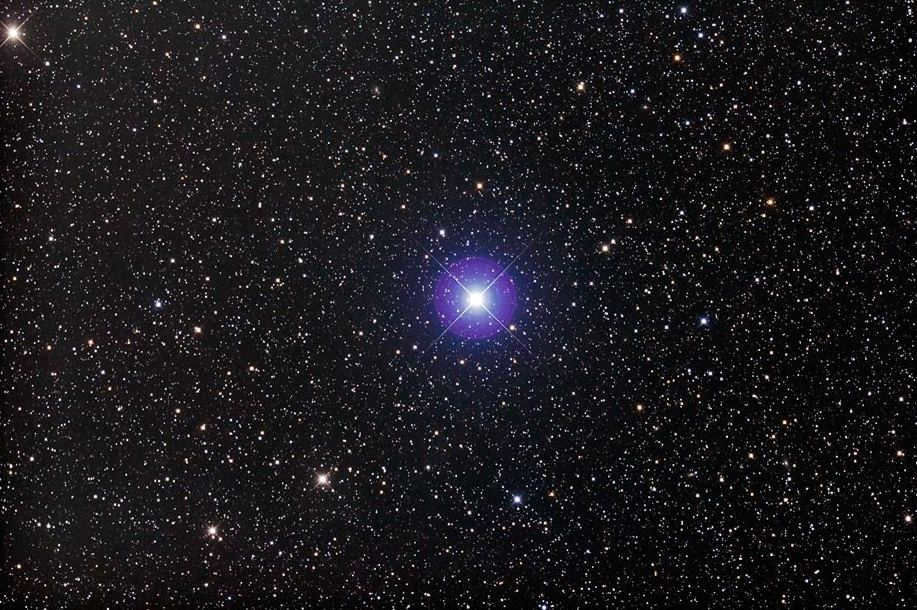
Image depicting the star Beta Perseus, also known as Algol.
The star located in the constellation Perseus presents a paradox in the truest sense. Component B, known as Algol B, is a subgiant, indicating that it is in the final stages of its evolution. On the other hand, Algol A, the second component, appears to be a main-sequence star. Typically, more massive celestial bodies evolve at a faster rate. However, in this case, the opposite is true. This phenomenon is known as the Algol paradox. The explanation, however, is quite simple: the more massive star became a subgiant as a result of matter transferring from one star to the other.
Other equally fascinating stars in the constellation
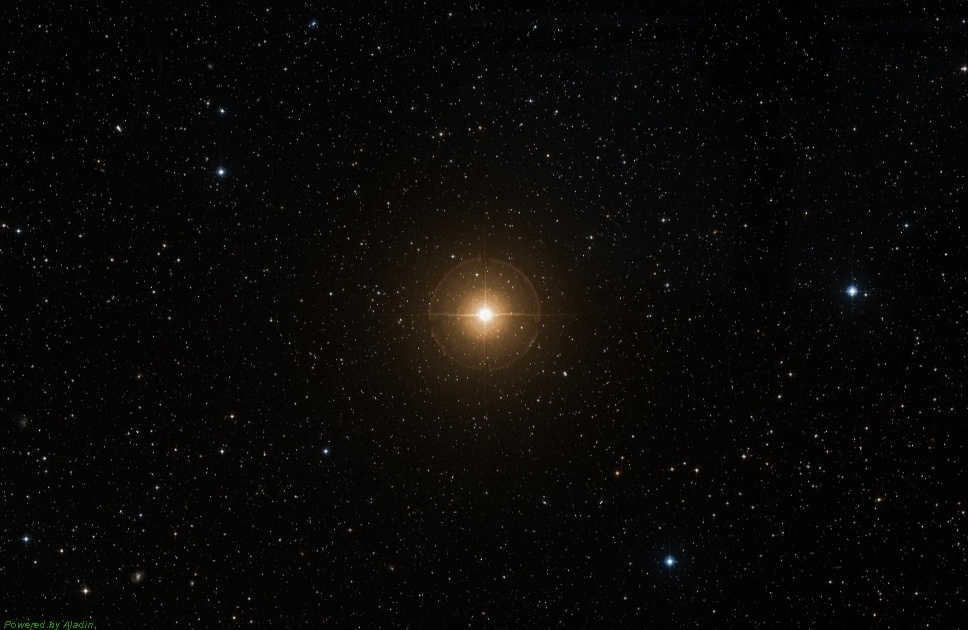
In the constellation Perseus, there is another star that catches our attention. Rho Perseus is a variable star that can be observed from Earth. Its brightness fluctuates between 3.2m and 4m, but the duration of these changes varies each time. The period can range from 33 to 55 days. Interestingly, there is also a long-term variation in the star’s radiance, which occurs approximately every 1100 days.
Eta, another stunning star in the Perseus constellation, is also a binary system. The primary star in the system has a magnitude of 3.8m, while its companion, located at an angular distance of 29 seconds of arc, has a magnitude of 7.9m. Observing this celestial pair through a telescope is an absolutely breathtaking experience. The “host” star emits a gentle orange glow, while its companion radiates a mesmerizing blue hue. It is truly challenging to divert one’s gaze from the captivating radiance of these two celestial bodies in the vast expanse of the night sky.
Scattered groups as a component of the examined constellation
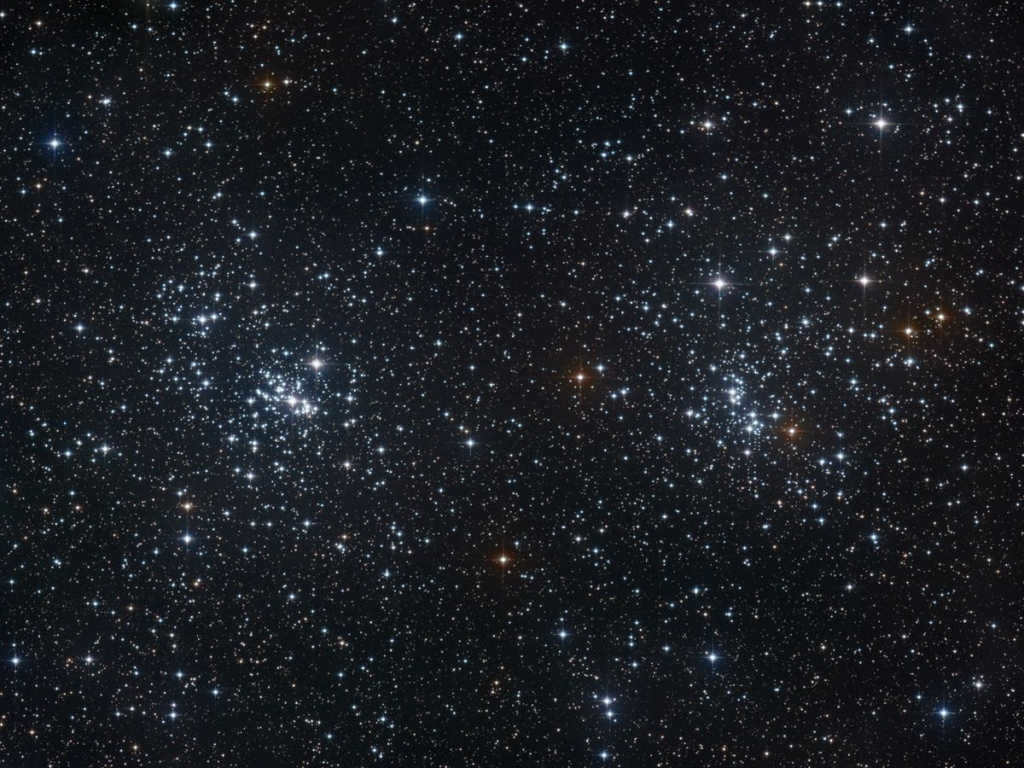
NGC 869 and NGC 884 are two star clusters that can be observed in the Perseus constellation. These clusters have an irregular shape and can be seen without the need for optical instruments. However, when observed through a telescope, their true beauty becomes apparent. It is interesting to note that these two clusters contain a large number of stars.
Therefore, the h Perseus cluster is a widely dispersed group of stars with a magnitude of 4.3m and a diameter spanning 56 light-years. It is estimated that there are approximately 350 stars within this cluster. h Perseus is situated at a distance of 6200 light-years away from our location.
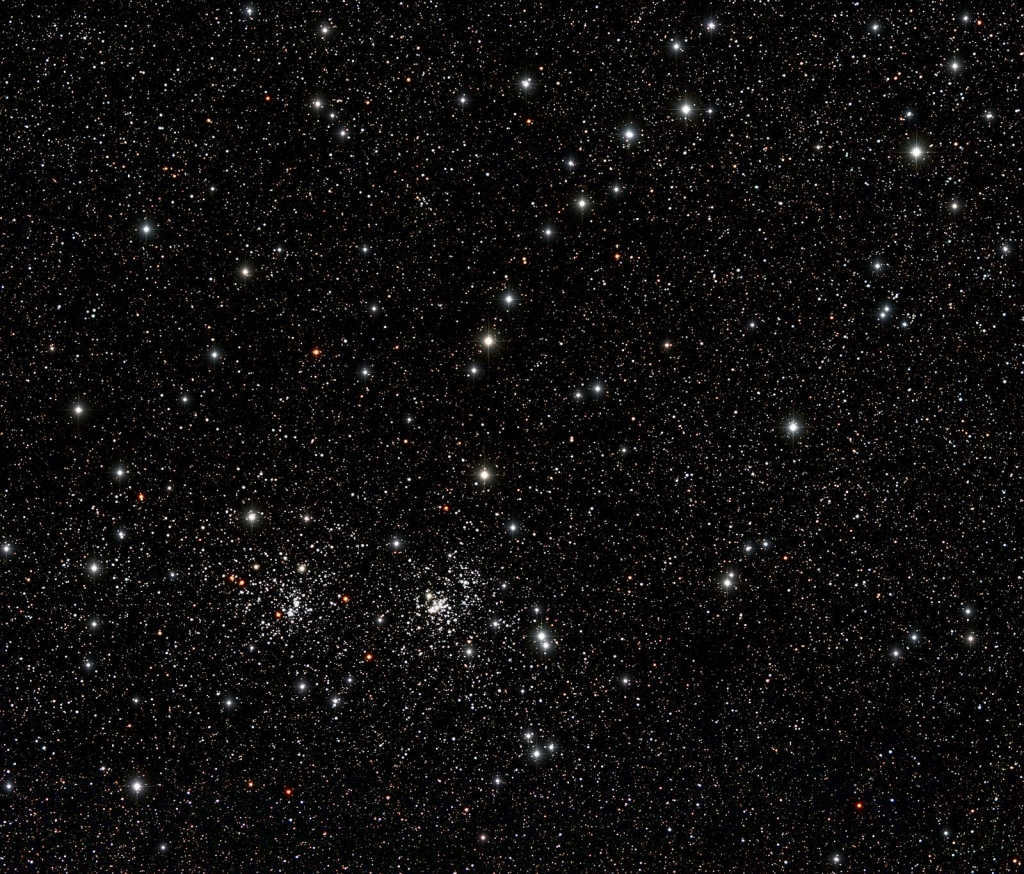
Picture of Hee and Ash Perseus, captured by an amateur photographer
The second dispersing group – x Perseus – possesses a similar stellar magnitude to h Perseus, which is 4.3m. The cluster’s diameter measures 77 light-years. This cluster contains nearly three hundred stars. x Perseus, the dispersed group, is situated at a distance of 6520 light-years from Earth. Observing these two clusters through a telescope provides a truly remarkable spectacle.
Nebulae and galaxies in the Perseus constellation
The Little Dumbbell
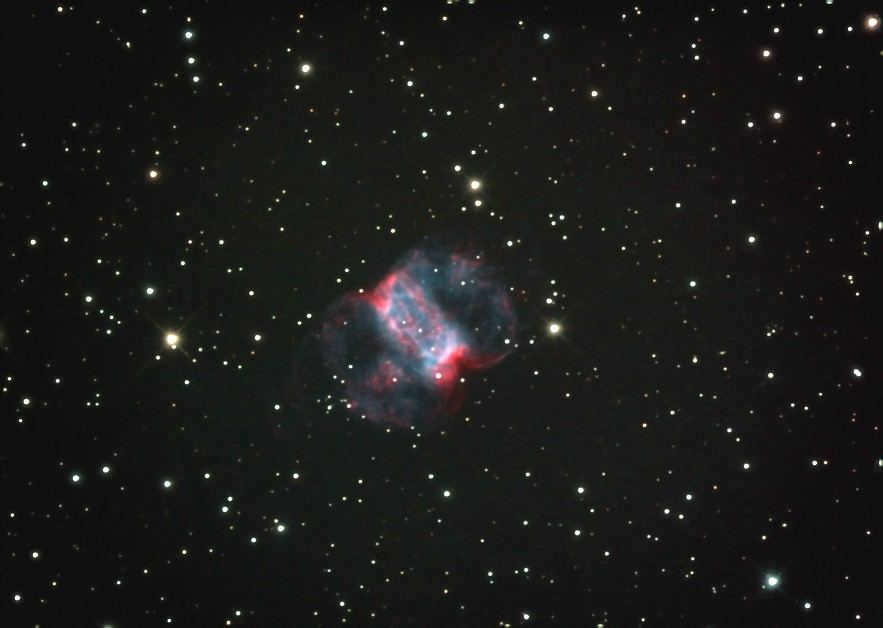
NGC 650, also known as the Little Dumbbell, is a fascinating nebula located within the constellation Perseus. This celestial object, also referred to as the Cork Nebula or simply Dumbbell, is designated as Messier 76 (M76) or NGC 650/651. It was first discovered in 1780 and was initially believed to be composed of two separate nebulae, leading to its double number designation in the NGC catalogs. Among the objects listed by Messier, this nebula is the faintest, with an apparent stellar magnitude of 10.1m and a size of 65 arc seconds.
The California Nebula
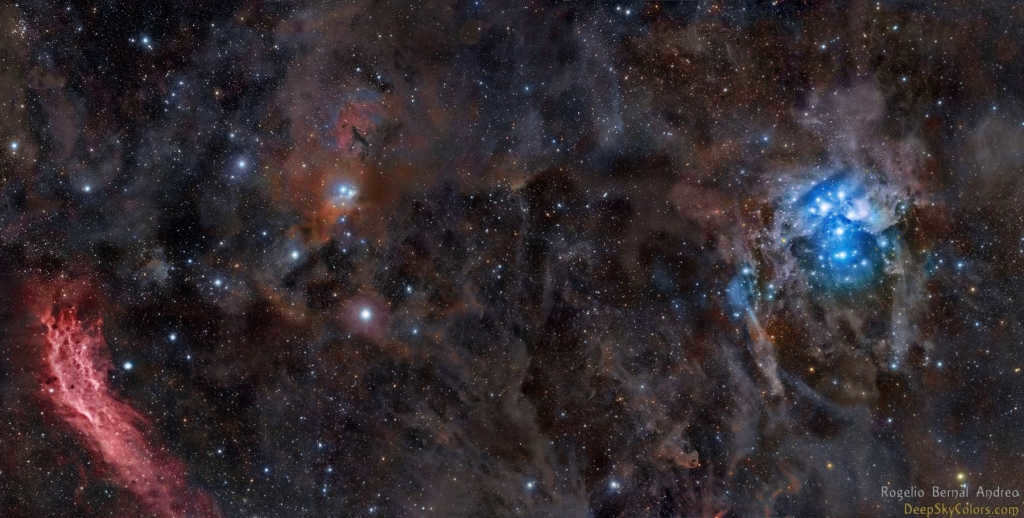

This image showcases the California Nebula and the Pleiades cluster. It was captured by photographer Rogelio Bernal.
Perseus is home to an emission nebula which shares its name with the famous American state of California. This celestial object is also known as NGC 1499 in astronomical catalogs. It was first discovered in the 19th century by the American astronomer Bernard.
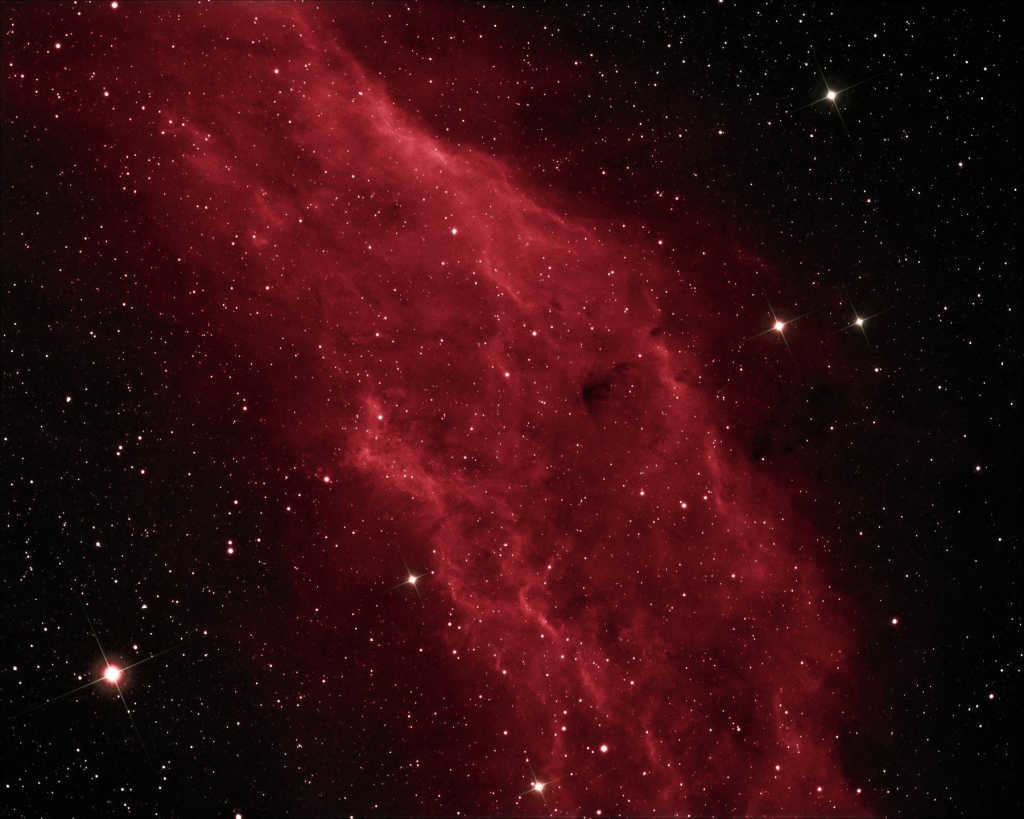
An amateur astronomer from the UK captured this photograph of the California Nebula.
Observing the California Nebula without specialized filters can be challenging due to its relatively low surface brightness. Situated 1000 light years away from Earth, this nebula spans approximately one hundred light years in length.
Nebula NGC 1333
Nebula NGC 1333 is a majestic celestial formation that captivates the imagination. This stunning nebula, located in the constellation Perseus, is a sight to behold. With its intricate patterns and vibrant colors, it is no wonder that NGC 1333 has become a favorite subject for astronomers and astrophotographers alike.
The nebula is believed to be a stellar nursery, where new stars are born. Deep within the dense clouds of gas and dust, the process of star formation is taking place. Young protostars, surrounded by their own circumstellar disks, are scattered throughout the nebula. These disks are made up of material that will eventually coalesce to form planets, much like our own solar system.
NGC 1333 is also home to a variety of other celestial objects. Herbig-Haro objects, which are jets of gas ejected from young stars, can be seen in the vicinity of the protostars. These jets are created when material from the protostar is ejected at high speeds, creating shockwaves as they collide with the surrounding gas and dust.
Observing NGC 1333 can be a challenging task, as it is located approximately 1,000 light-years away from Earth. However, with the help of advanced telescopes and imaging techniques, astronomers have been able to capture stunning images of this cosmic wonder.
The beauty of NGC 1333 serves as a reminder of the vastness and complexity of the universe. It inspires us to continue exploring and learning about the mysteries of the cosmos.
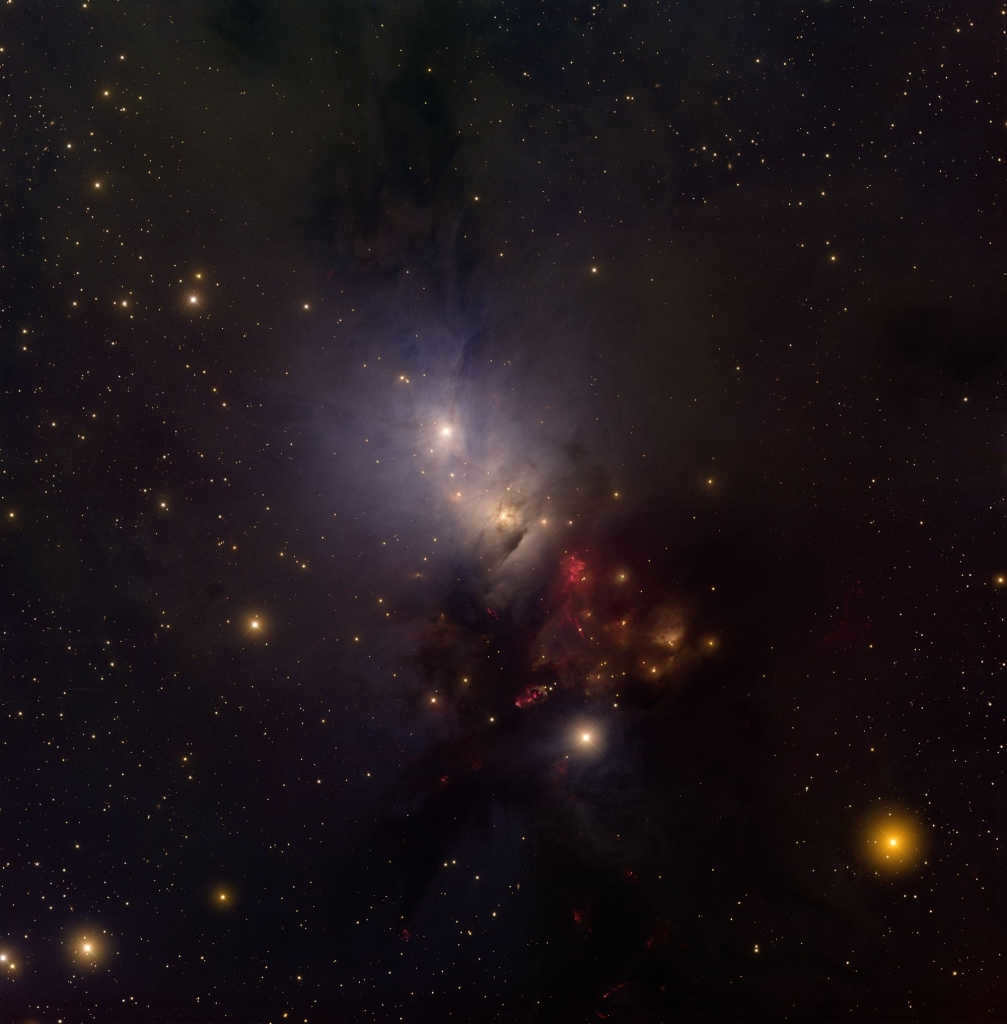
Another nebula called NGC 1333 is located at the same distance from Earth as the California Nebula. Unlike the California Nebula, NGC 1333 is a reflection nebula. When looking at the images, one can notice that this object has a bluish color. This bluish hue is a result of starlight reflecting off interstellar dust. Interestingly, the dust itself also emits light.
NGC 1260: The Fascinating Spiral Galaxy
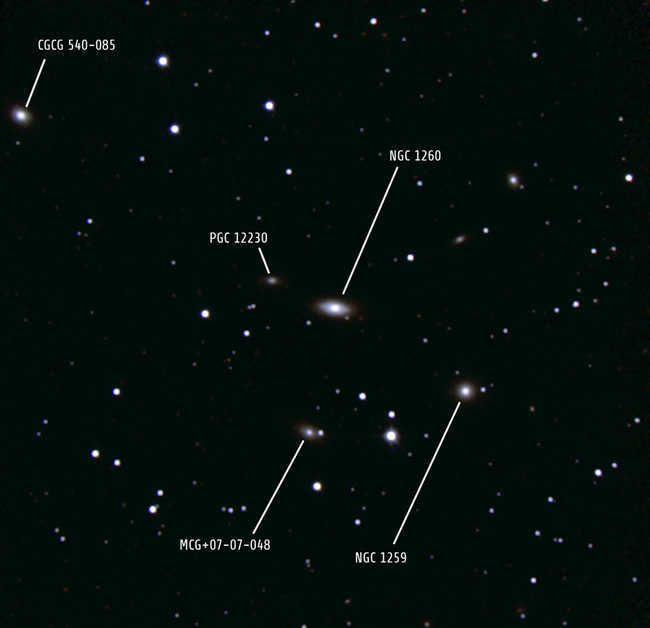
The constellation Perseus houses an extraordinary spiral galaxy known as NGC 1260. This celestial body was once the site of the brightest supernova ever observed by humanity, SN 2006gy. The explosion of this star was a hundred times more potent than any other supernova event. It took 70 days for the peak brightness to be reached, during which time the total light emitted was equivalent to the luminosity of 50 billion suns. NGC 1260, the host galaxy of this extraordinary explosion, is situated 238 million light years away from Earth.
The Perseids hold the distinction of being the most renowned meteor shower in history.
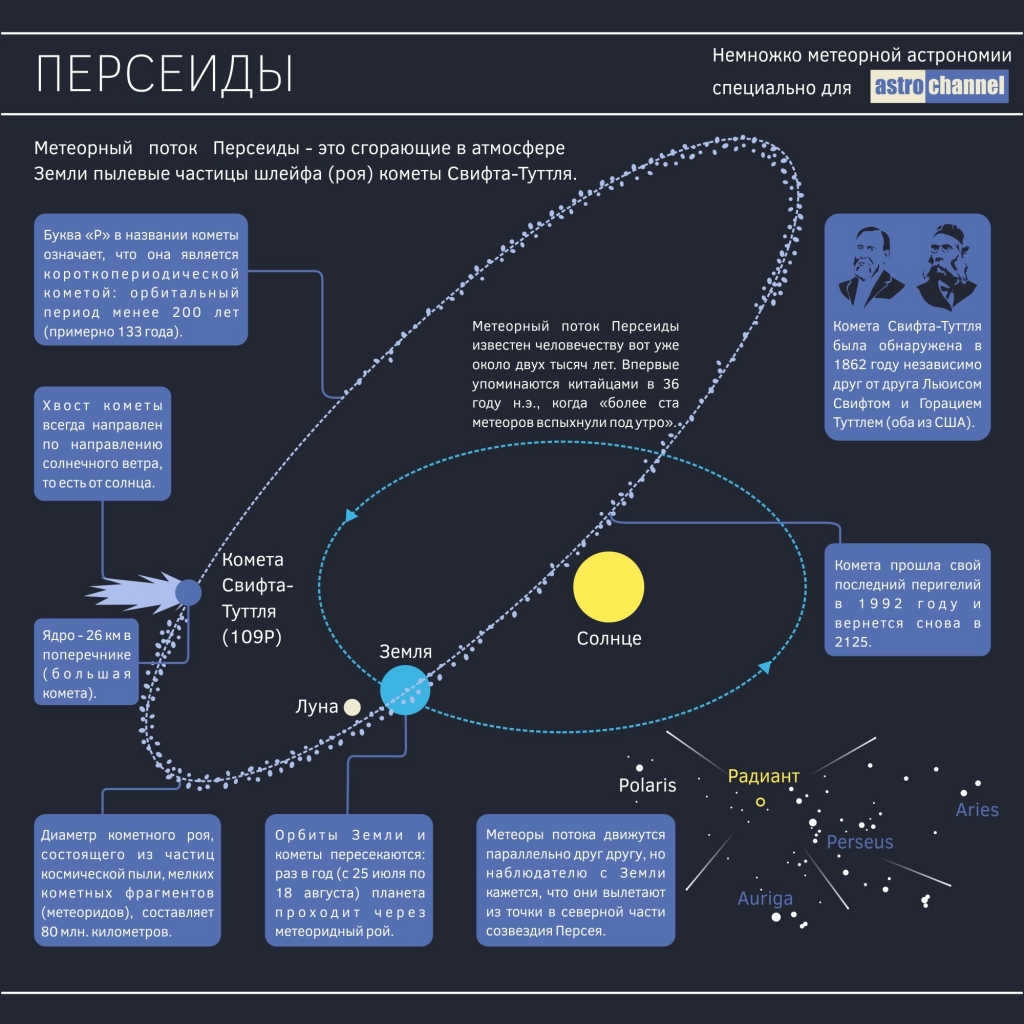
The Perseid meteor shower originates from the radiant point in the constellation Perseus and is a highly anticipated event during the summer. This remarkable celestial phenomenon occurs in August, when the Earth passes through a trail of small dust particles left behind by the Swift-Tuttle comet. These minuscule particles, similar in size to grains of sand, rapidly disintegrate in our atmosphere, creating a stunning display of shooting stars. The intensity of the meteor shower gradually builds up and then subsides over time.
Swift-Tuttle Comet
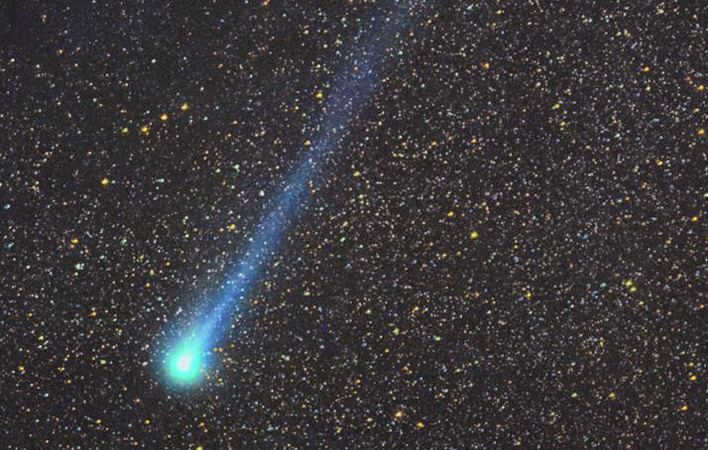
Comet Swift-Tuttle only comes near our planet once every 135 years, but its tail crosses Earth’s path annually. As the comet approaches the Sun, it releases fragments of ice and dust into space. These fragments, moving towards the Sun, enter our atmosphere and burn up, creating flashes of light resembling stars in the night sky. The Perseids meteor shower is typically observed from mid to late August, during which an average of 60 meteors can be seen per hour.
Historical Background
Given the constellation’s age and its association with a Greek scientist, it is reasonable to infer that its name originates from ancient Greek mythology. On ancient maps, this constellation, although not the brightest (its stars are only of second or third magnitude), is easily recognizable to the naked eye. It is depicted as a man holding a rounded object. This figure represents the legendary hero of ancient Greece – Perseus.
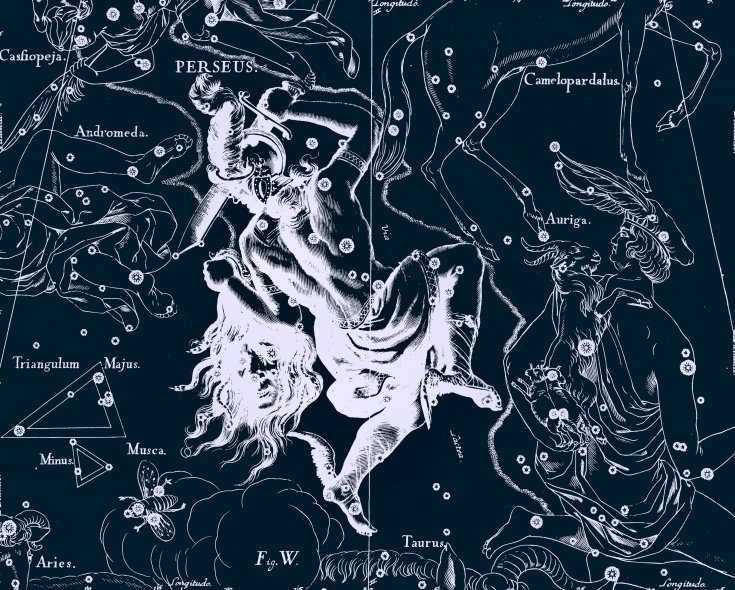
Jan Hevelius depicted Perseus in his constellation atlas, capturing its magnificence and grandeur.
In the vicinity of this constellation, you can find other equally famous constellations with mythological origins – Pegasus and Cassiopeia, Cepheus and Andromeda. Together, they form a cluster of constellations that share a common storyline with Perseus’ legend. Additionally, a little further away lies Cetus, another ancient constellation that is directly connected to the Perseus narrative.
Legend has it that Perseus, the mythical hero, was born to the powerful Zeus and a mortal girl named Danae. Danae had caught the eye of a man named Polydectes, who wanted to get rid of Perseus, so he sent him on a quest to bring back the head of the terrifying Medusa Gorgon as a wedding gift. With the help of the wise Athena and the traveler’s guide Hermes, Perseus was able to defeat the snake-haired monster. On his journey back home, he also saved a princess named Andromeda, who was trapped and bound to a rock by a sea monster (Kit). When Perseus returned home safely and presented the Gorgon’s head to the king, he only angered him further. In response, Perseus used the same Gorgon head to turn the king into stone. Today, Perseus is a neighboring constellation in the sky with Andromeda, who became his loyal companion.
One way to accomplish this is by locating the constellation known as the Big Dipper in the night sky, which resembles a large ladle or scoop.
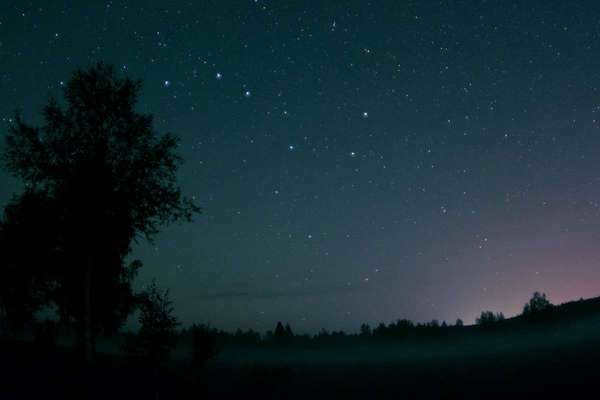
Next, it is necessary to locate the North Star. This task can be easily accomplished by measuring about six times the diameter of the outer wall of the bucket, as shown in the image.
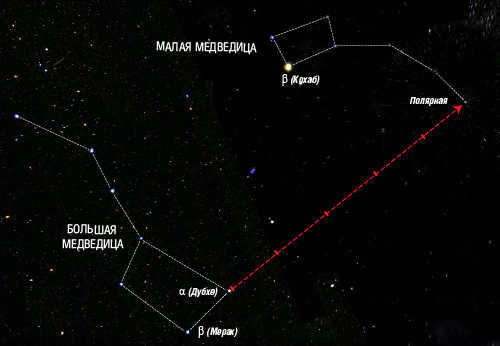
Afterwards, you will need to locate Cassiopeia. This task is also relatively simple – in the night sky, it will resemble a large letter W. Its position is approximately the same as the distance from the handle of the Big Dipper to Polaris. Look towards the right and above the constellation Ursa Major.
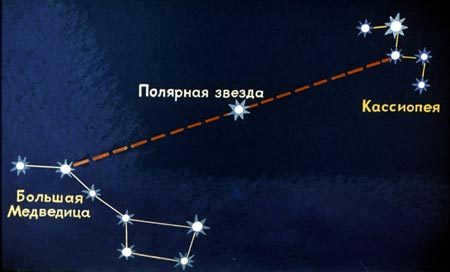
Afterwards, you should proceed by moving five units downwards from one of Cassiopeia’s legs, in the leftward direction.
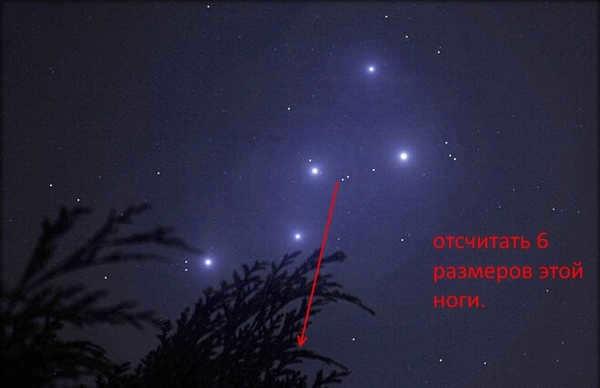
Perseus can be identified by its distinctive arrangement of five stars forming a zigzag pattern. It is easily recognizable and serves as a clear marker for finding the constellation.
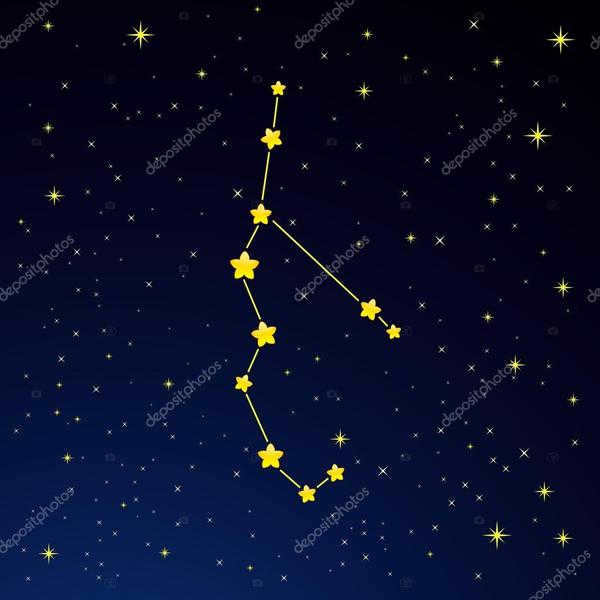
Essentially, the appearance will be similar to the image above.
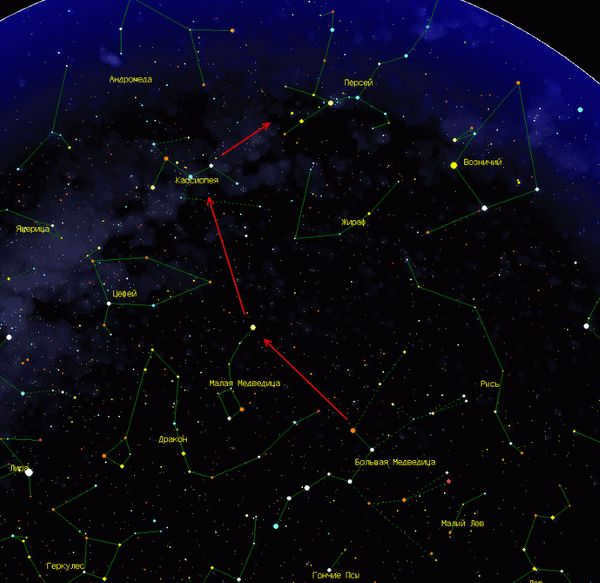

That is correct. You will observe a similar sight:
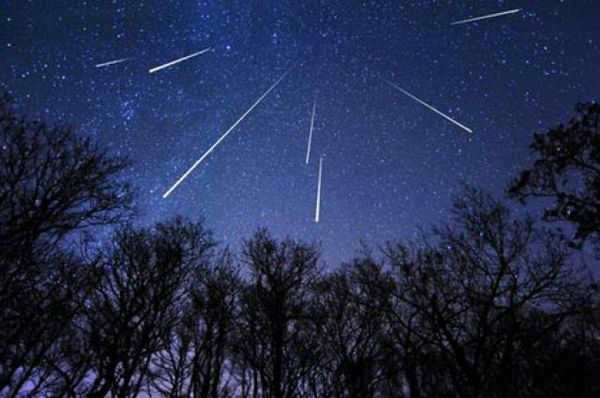

A multitude of shooting stars per minute. It’s an abundance of hopeful dreams.

By the way, the constellation Perseus is home to the famous Algol, located two fingers to the left of which Kuzmich intended to rule.
Alternatively, you can download the SkyView app on your phone, which allows you to view all the celestial bodies through your camera’s overlay.
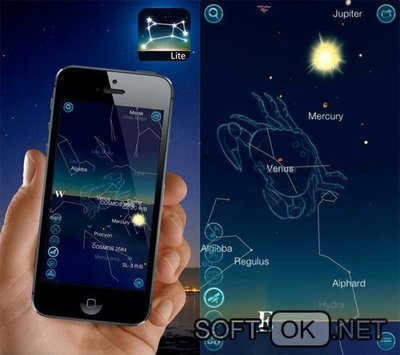
After taking a glance, I observed a chair placed at the cottage with all the lights off. Wrapped in a blanket and holding a glass of wine, I sat down to watch the scene. Suddenly, my mother-in-law walked by in the darkness, and I wished her a good night from my concealed spot. It seemed like I had aged her a few years with my unexpected appearance. As I gazed up at the sky, I noticed only a few stars twinkling.
Feeling a sense of frustration, I turned my attention to the cloudy sky outside the window and vented my frustration by spitting. I then decided to head to the bathroom to smoke a cigarette.

Observing the Perseid meteor shower
I am excited to share the outcome of my 4-hour stargazing experience in the Belarusian fields. Despite being interrupted by mosquitos, I managed to capture a meteor on my camera with a low-quality Chinese fisheye lens. The rest of the photographs turned out to be of satellites passing by.
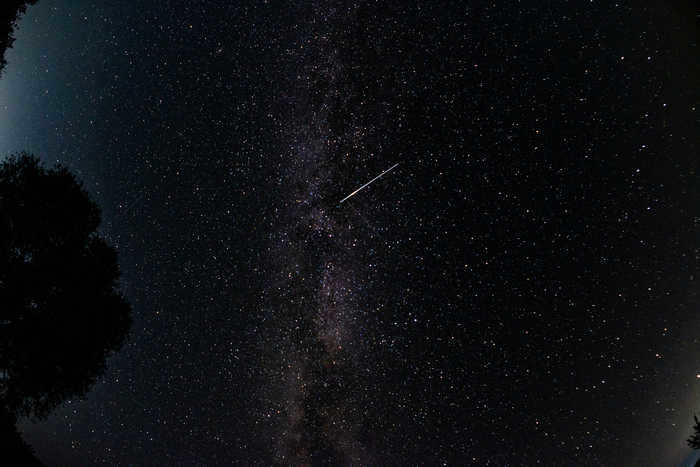
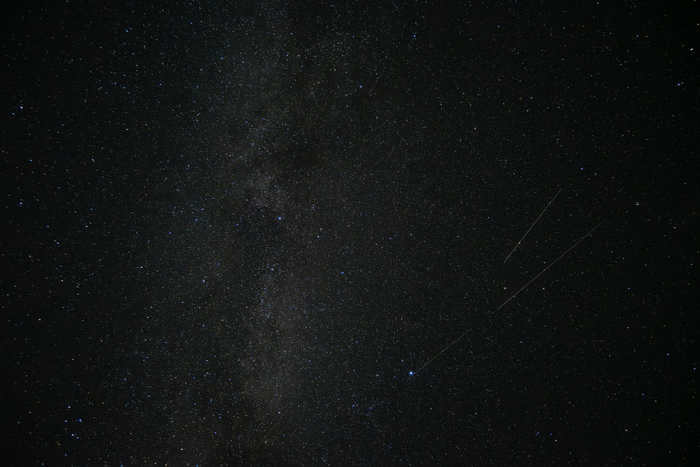

Cassiopeia
The constellation Cassiopeia is located 80 km from Minsk and was captured using a Nikon d80+ Nikkor 50mm 1.8 lens.
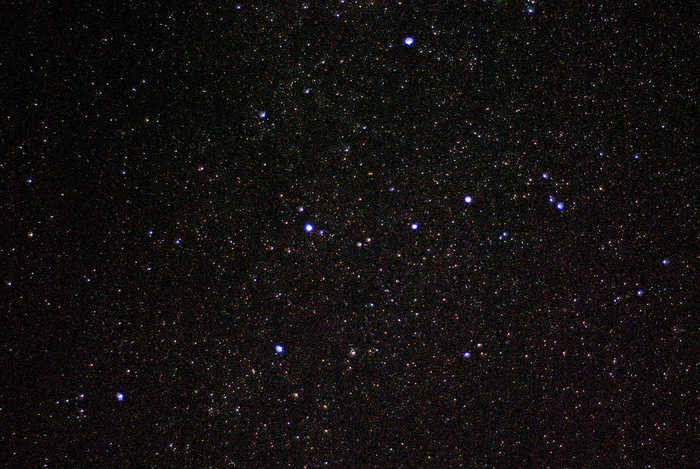
August Full of Stars
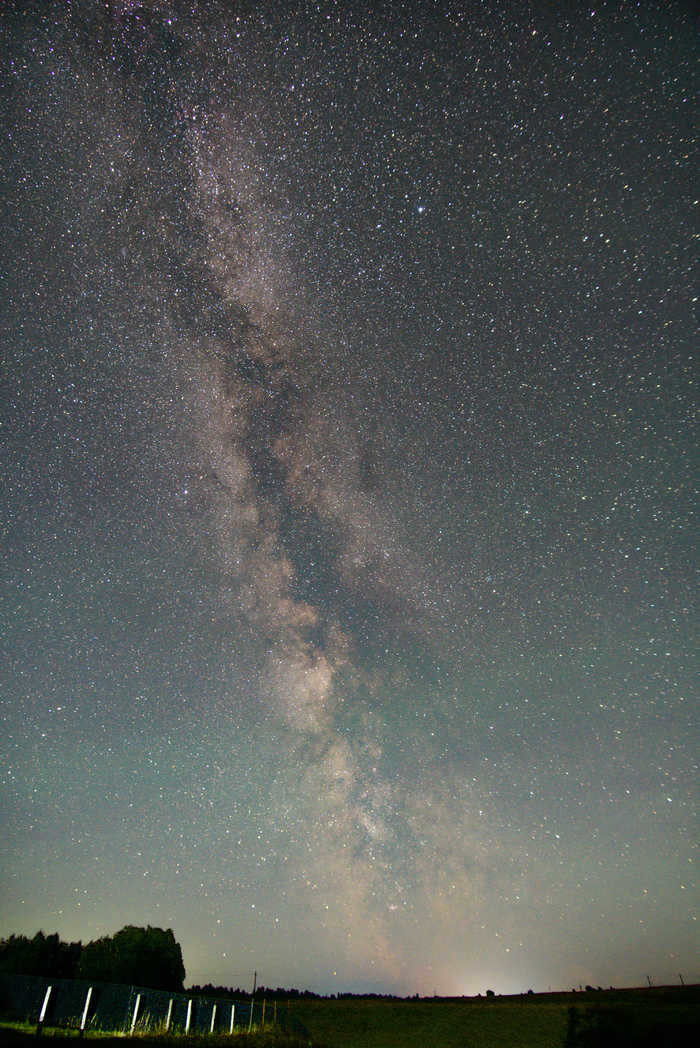
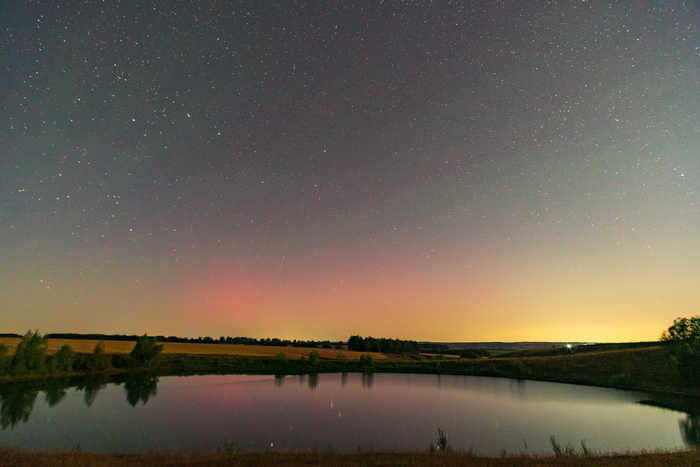

The Bubble Nebula NGC 7635 and the dispersed star cluster M52.
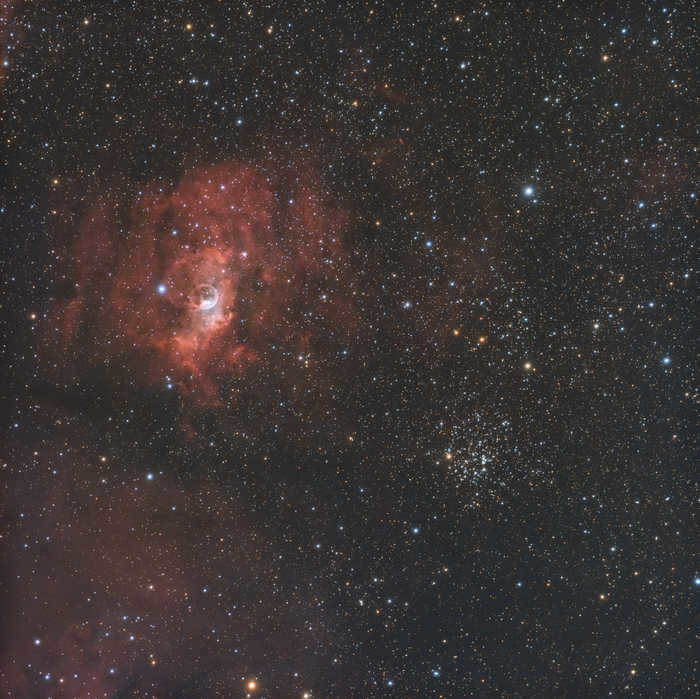
The Bubble Nebula NGC 7635 (LBN 549, Sharpless 162, Caldwell 11) is an emission nebula located in the constellation Cassiopeia. This nebula, known as the “Bubble,” was created by the powerful stellar wind emitted by a massive and hot star called SAO 20575 (BD+60 2522), which has an apparent magnitude of 8.7 and a mass between 10 and 40 times that of our Sun. The Bubble Nebula is part of a vast molecular cloud situated approximately 7,100 to 11,000 light-years away from Earth.
When observed from Earth, the Bubble Nebula is only 35 minutes of arc away from the M 52 star cluster.
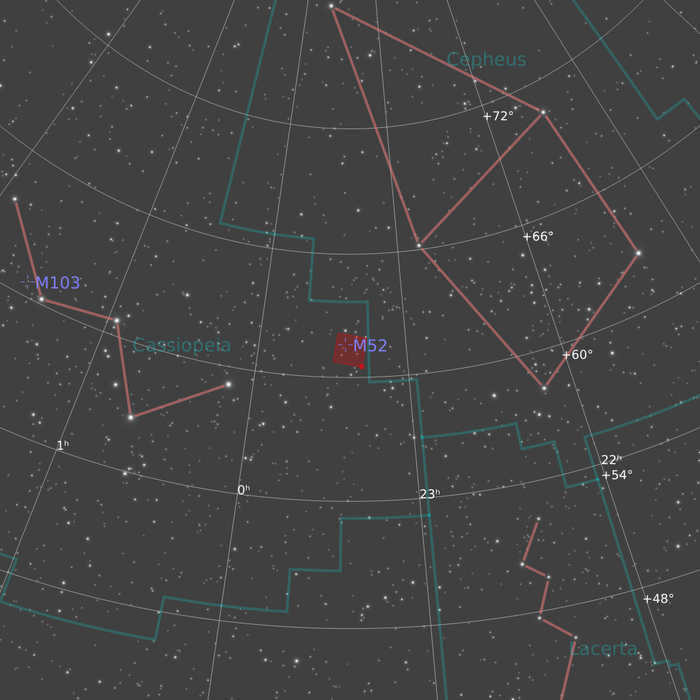
The William Optics Zenithstar 81 APO telescope was used for this astrophotography, along with the ZWO ASI533MC Pro/ZWO ASI533MM Pro camera. The shooting was done with the ASIAIR Plus, and the calibration, composition, and processing were done using PixInsight. Additional cosmetic adjustments were made using Photoshop.
The sky lighting during the shoot was in the Orange Zone.
The exposure settings for this image were as follows:
Filter: Antlia Triband RGB Ultra Filter 2″ – 137 frames of 120 seconds
Filter: Antlia 3nm Narrowband H-alpha 1.25″ – 17 frames of 300 seconds
Gain: 100
Total accumulation: 5 hours 59 minutes

As it is widely known, Perseus constellation can be found in the celestial sphere of the northern hemisphere. With its vast expanse covering 615 square degrees, it proudly holds the 24th position among all the stellar precincts.
Furthermore, this region is surrounded by some of the most renowned constellations including Andromeda, Ascendant, Giraffe, Cassiopeia, Aries, Taurus, and Triangle.
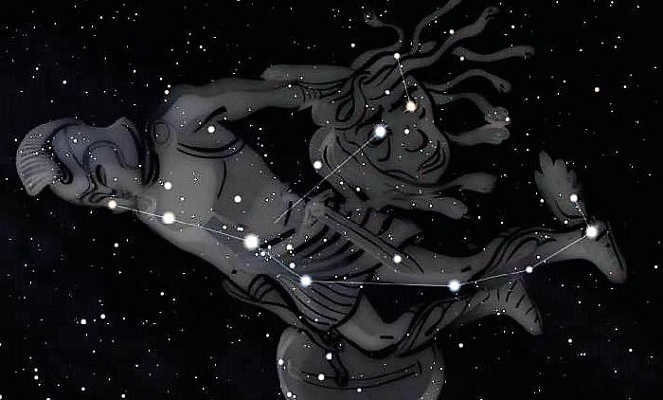
Historically, the region has been recognized for centuries. Primarily, the constellation is linked to a figure from ancient Greek mythology. According to legend, Zeus fathered Perseus (with a mortal woman named Danae). This heroic young man is renowned for his triumph over the Gorgon Medusa and his rescue of the beautiful Andromeda from a sea monster.
As a result, Perseus and Andromeda wed and went on to have six children. In the night sky, the neighboring constellations are connected in various ways. For instance, Cepheus and Cassiopeia are Andromeda’s parents, and they all reside close to Perseus.
The region was officially included in Ptolemy’s star catalog and later recognized by the modern International Astronomical Union.

Stars that make up the Perseus constellation
Actually, there are numerous fascinating celestial objects across the vast expanse of the sky. As usual, the brightest star, known as Alpha or Mirfak, is referred to as the elbow. This supergiant has a magnitude of 1.79.
In second place we have Beta, also known as Algol or the evil spirit. Interestingly, it is sometimes called the Demon Star. Algol is a triple binary system with a visual magnitude of 2.12.
Claiming the third spot is Zeta, also known as Menkib, which translates to shoulder. This constellation boasts a blue-white supergiant with a brightness of 2.86.
Next up in the constellation is Epsilon, a multiple star system with an apparent brightness of 2.88.
Gamma and Delta are a pair of stars that shine twice as bright as the average stars. Their magnitudes in the night sky are 2.93 and 3.01, respectively.
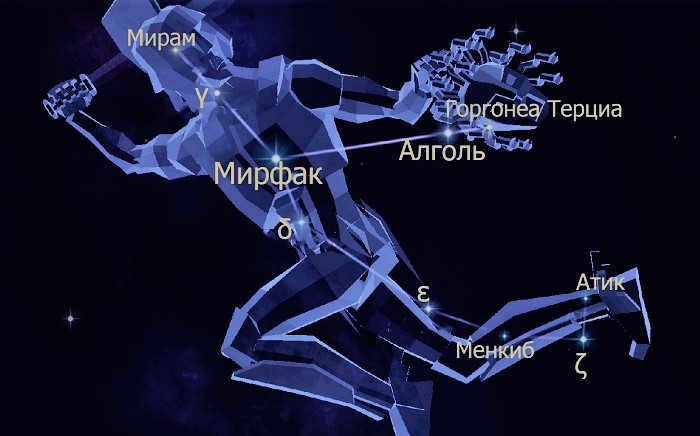
Gorgonea, also known as Ro Perseus, is the third sister of Gorgone. It is categorized as a red giant star and is a variable star called Mu Cepheus. Its average luminosity is 3.39.
The following giants also have high visibility:
- Nu with a visibility indicator of 3.37;
- Eta (Miram) with a visibility indicator of 3.79;
- Tau with a visibility indicator of 3.93;
- Xi (known as Menkib or Zeta, which translates to shoulder) with a visibility indicator of 4.04;
- Gorgon Kuata (the fourth sister) with a visibility indicator of 4.63.
Kappa and Mu are multiple star systems with apparent magnitudes of 3.8 and 4.12, respectively.
Omicron – Atyx is also referred to as shoulder and is a yellow-blue supergiant. Its brightness measures 3.83.
Additionally, Iota and a star called Gorgon Secunda (the second sister) are both dwarfs with visual magnitudes of 4.05 and 4.7 respectively.
Theta and X Perseus are double stars with apparent magnitudes of 4.12 and 6.79.
Lambda is classified as a white-colored subgiant and has an apparent magnitude of 4.3.
Omega belongs to the K1 III class and has a visual magnitude of 4.63.
Coincidentally, the constellation is also accompanied by a giant star – 1 Ascendant or HR 1533. Its luminosity is 4.88.
In addition, a young V713 of Perseus, belonging to the K3B class, has been discovered, as well as a bright newcomer, GK Perseus.
Therefore, this region showcases a wide array of stellar components. However, it conceals more than meets the eye. Let’s delve into what else it encompasses.
Which celestial bodies does the constellation Perseus contain
Above all, this constellation holds two notable Messier objects: M34 and M76
Messier 34 is an open cluster comprised of stars with a visible magnitude of 5.5. As expected, it appears as a hazy spot.
Messier 76 is a planetary nebula known as The Little Dumbbell. It is rather challenging to observe due to its low brightness of only 10.1.
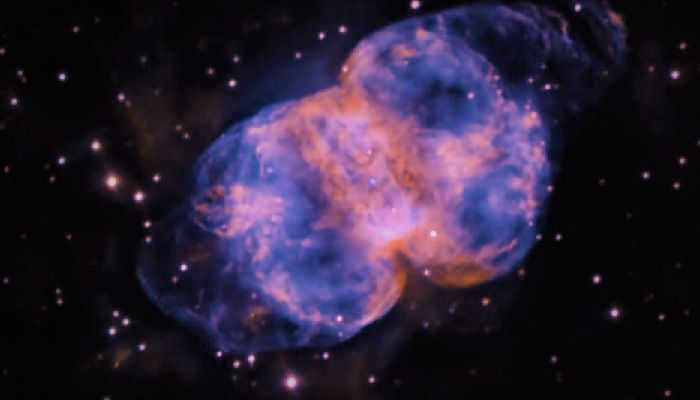
Simultaneously, the Perseus constellation is the location of the massive Perseus molecular cloud.. Within this cloud, a small region exists where new stars are being formed.
Interestingly, the Perseus constellation is also home to the Perseus double cluster. This cluster brings together two groups of bright stars, resulting in a combined apparent magnitude of 4.3.
Furthermore, an open star cluster known as Alpha Perseus can be found in the vicinity, boasting an apparent visual magnitude of 1.2.
Additionally, the Perseus constellation is host to the Perseus galaxy cluster, which contains approximately one thousand systems.
Meanwhile, various galaxies can be found lurking in this area:
- NGC 1260 is a spiral galaxy with a brightness rating of 14.3. Notably, a recent supernova, SN 2006gy, was detected there;
- A Seiferian supernova, NGC 1058, has a visibility value of 11.82;
- Another Seiferian galaxy, NGC 1275 or Perseus A, has a visibility reading of 12.6;
- The radio galaxy 3C 83.1B has an apparent magnitude of 12.63.
It is worth mentioning a couple of nebulous objects:
- NGC 1333 is a reflected nebula with an apparent magnitude of 5.6. It is located in the Perseus molecular cloud;
- The California Nebula (NGC 1499) is an emission nebula with a luminosity value of 6.
Additionally, the area features two asterisms:
- Gorgon’s Head. The Gorgon’s Head is an irregular quadrangle formed by the asterism Beta, Psi, Rho, and Omega.
- The segment of Perseus has the shape of a crescent moon formed by the eight main stars.
Finally, the constellation Perseus has two meteor streams: the Perseids and the September Perseids.
Perhaps the Perseid stream deserves special attention. In fact, it is one of the most renowned streams in the northern hemisphere sky. It occurs annually from July through August.
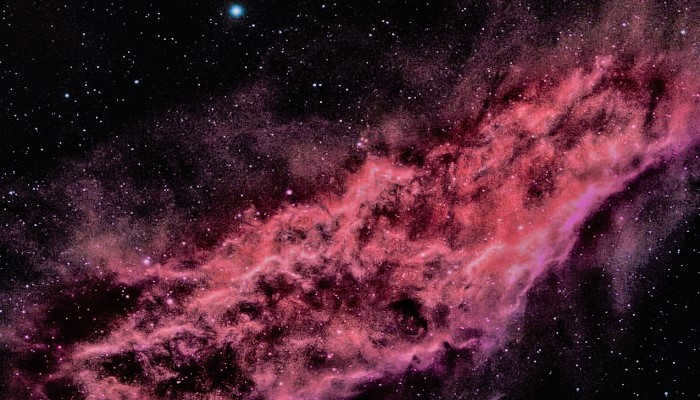
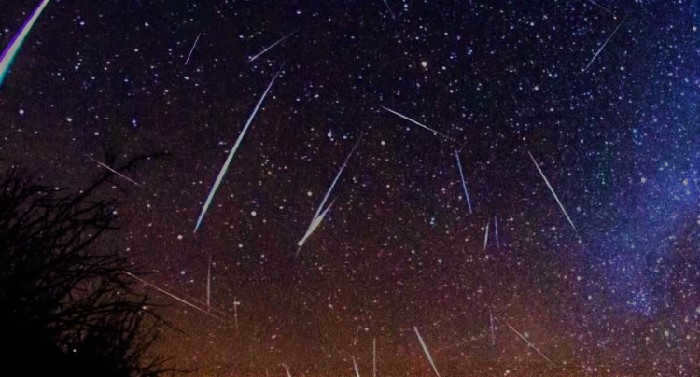
Perseus Constellation: Observing Opportunities
Residents of Russia have the unique opportunity to observe the Perseus constellation due to its visibility at a latitude of +90 to -31 degrees. The best time to observe this constellation is during November and December, as it is in the zenith area during this period.
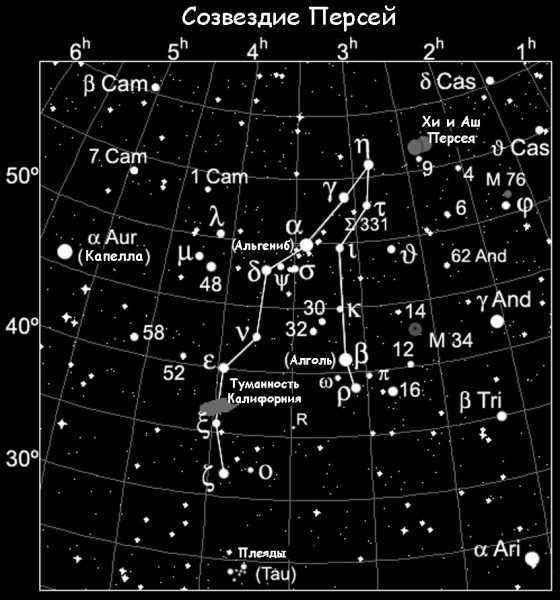
The constellation known as Perseus was first observed by the ancient Greek scientist Ptolemy in the 2nd century.
Perseus in the celestial realm
Spanning an area of 615 square degrees, the constellation Perseus ranks as the 24th largest constellation in the night sky.
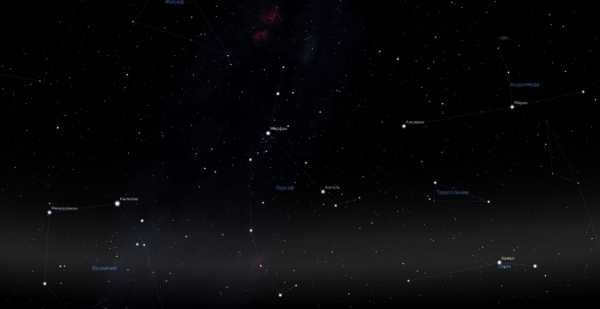
Perseus, as seen in the planetarium software
This particular constellation is predominantly situated along the Milky Way, making it easily identifiable against the backdrop of the luminous white sky. In close proximity to Perseus, one can locate the zodiacal constellations Aries and Taurus, along with Cassiopeia, Andromeda, and the Ascendant. Under optimal conditions for stargazing, such as a moonless and clear night, it is possible to observe an average of 90 stars belonging to the Perseus constellation without the aid of any optical instruments.
The optimal period for observing this constellation is during the late autumn, specifically in November. However, individuals residing in the middle latitudes of Russia have the opportunity to observe it for most of the year, with the exception of the months of May and June when Perseus is partially obscured in the northern region beyond the horizon. Nevertheless, by patiently awaiting November or December and directing one’s gaze towards the magnificent night sky, anyone can easily identify a distinctive irregular polygon comprised of the 11 most luminous stars within this constellation. This particular constellation is referred to as Perseus.
The most brilliant representative of Perseus
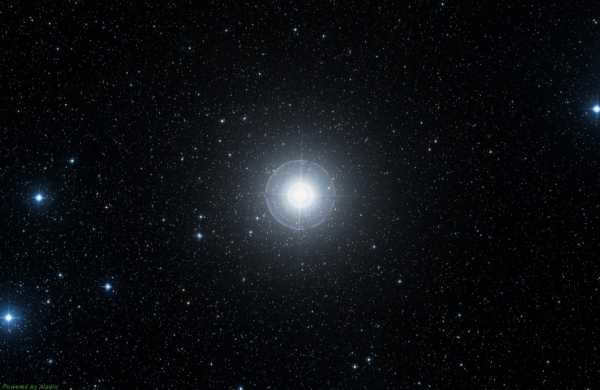
We should now discuss the stars in the Perseus constellation that warrant the most attention from observers. The first star we will focus on is Alpha Perseus, also known as Mirfak (which means “elbow” in translation) or Algenib (derived from the Arabic word for “side”). Alpha Perseus is a giant star with a yellow-white spectrum. It is located at a distance of 590 light-years from our planet. The temperature of this star is equivalent to that of the sun, measuring at 5000K.
Mirfak, a binary star, has a visual magnitude of 1.80m. Alpha Perseus is classified as an F5 Ib star. Mirfak’s companion, with an apparent magnitude of 11.8m, is located 167 arc seconds away from the primary star. In the constellation of Perseus, there is an open cluster known as Mirfak, also referred to as Melotte 20 and Collinder 39. Mirfak is host to its own exoplanet, a hot gas giant with a mass equivalent to 6.6 times that of Jupiter. The exoplanet has an orbital period of approximately 128 days.
An eclipse-invariant luminary that has become a standard
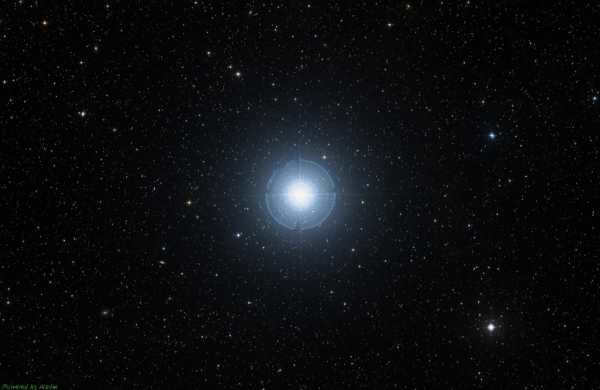
Algol A is a star that orbits around Algol B. This animation was created using 55 frames from the Chara interferometer.
There is a fascinating star located in the Perseus constellation that stands out for being a multiple system and also being the brightest eclipsing variable celestial object. This star is known as Algol, also referred to as the beta star of Perseus. Algol consists of two components, Algol A and Algol B, which are very close to each other with a distance of 0.682 astronomical units. Algol A and Algol B orbit each other with a period of approximately 2.9 days. This periodic orbit causes the two stars to periodically eclipse each other, resulting in the variability effect observed in Algol.
Within this framework, there exists a supplementary element – Algol C. The final, third celestial body revolves around the common center of mass of the other two entities at a much lengthier interval, approximately equivalent to two Earth years, or 1.86 years. This deviation arises from the substantial separation between Algol C and its stellar counterparts, with a staggering distance of 2.69 astronomical units. The combined mass of the trinary system boasts an impressive total, approaching nearly six times the mass of our Sun.
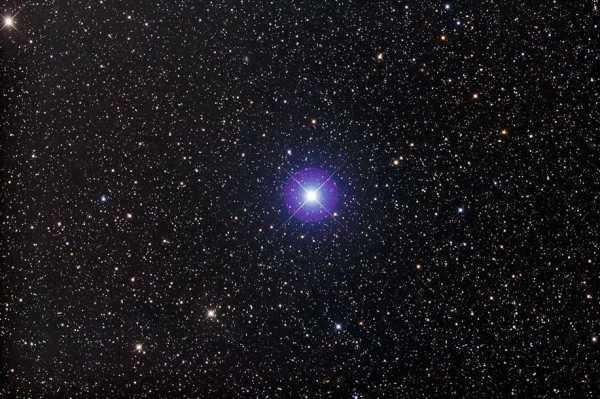
This celestial object within the Perseus constellation is paradoxical in the purest form. In this instance, the less massive component B is a subgiant in the final stages of its evolution, while the secondary component, Algol A, appears to be a main-sequence star. Typically, it is the more massive celestial bodies that evolve at a faster rate. However, in this peculiar case, the opposite is true. This phenomenon is referred to as the Algol paradox in scientific circles. Nevertheless, the explanation for this paradox is rather straightforward: the more massive star transitions into a subgiant after a period of time as a result of matter transfer from one star to another.
Other stars of equal curiosity in the constellation
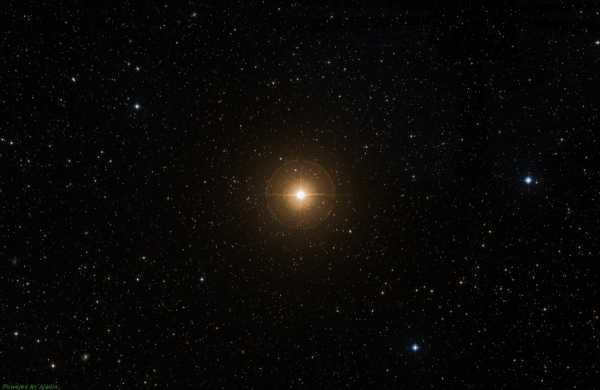
There is another variable star in the constellation Perseus that can be observed from Earth. It is called Rho Perseus and is classified as a variable star. The brightness of this star fluctuates between magnitude 3.2m and 4m, but the duration of each fluctuation varies between 33 and 55 days. It is believed that there is also a longer period of variation in the star’s radiance, which occurs approximately every 1100 days.
Perseus has yet another stunning star, Eta, which is also a binary system. The primary star in the system has a brightness of 3.8m, while its companion, located 29 arc seconds away, has a magnitude of 7.9m. Viewing this celestial duo through a telescope is an awe-inspiring experience. The main star emits a gentle orange glow, while its companion has a blue shimmer. It is truly captivating to gaze at the radiance of these two celestial entities in the vast expanse of the nighttime sky.
Scattered groupings in the constellation being examined
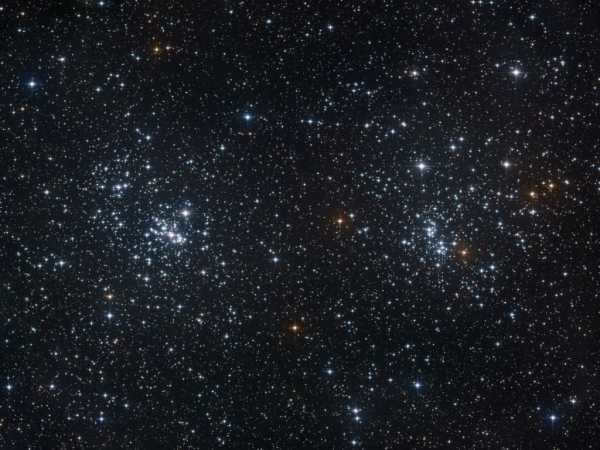
The Hee and Ash cluster of Perseus, known as NGC 869 and NGC 884, can be observed near the star Perseus. These clusters have an irregular shape and can be seen without the need for optical instruments. However, when observed through a telescope, their true nature becomes apparent. NGC 869 and NGC 884 are two separate star clusters scattered in the sky. They are notable for containing a large number of stars.
Therefore, the h Perseus cluster is a group of stars that are spread out and have a brightness level of 4.3m. It has a diameter of 56 light-years and contains approximately 350 stars. The h Perseus cluster is situated at a distance of 6200 sv. years from our location.
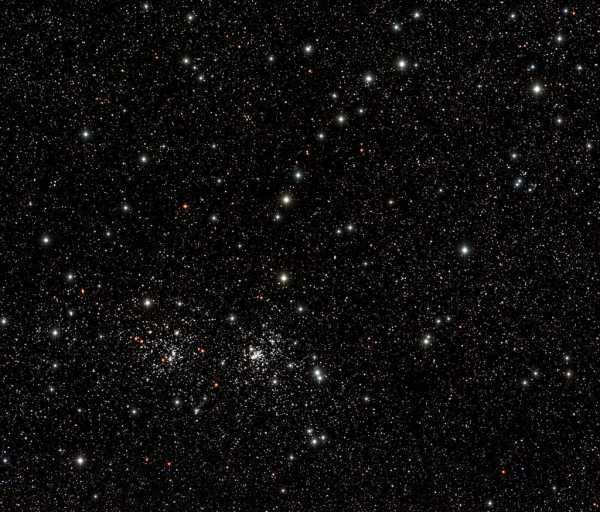
Hello and Ash from Perseus, captured in this image by an amateur astronomer
The second dispersed cluster, known as x Perseus, possesses a comparable stellar magnitude to h Perseus, measuring at 4.3m. With a diameter of 77 light-years, this cluster contains nearly 300 stars. Situated approximately 6520 light-years away from Earth, x Perseus presents a truly breathtaking spectacle when observed through a telescope.
Nebulae and galaxies in the Perseus constellation
The Little Dumbbell Nebula
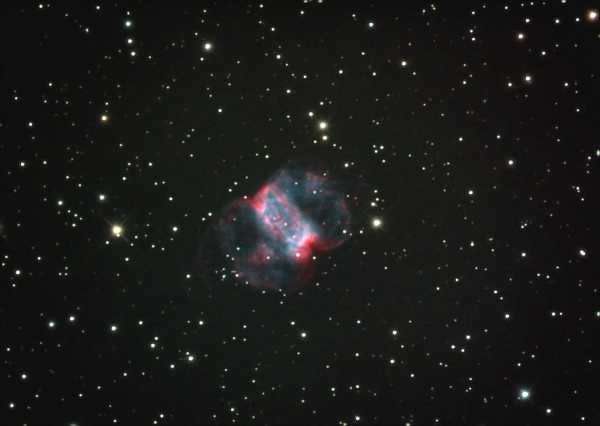
NGC 650, also known as the Little Dumbbell, is a fascinating nebula located within the Perseus constellation. It is alternatively referred to as the Cork Nebula or simply the Dumbbell. It is also designated as Messier 76 (M76) or NGC 650/651. This planetary nebula was first discovered in 1780. At the time, it was believed to consist of two separate nebulae, which is why it was given a double number in the NGC catalogs. The Little Dumbbell Nebula is the faintest object on Messier’s list, with an apparent stellar magnitude of 10.1m and a size of 65 arc seconds.
The Nebula of California
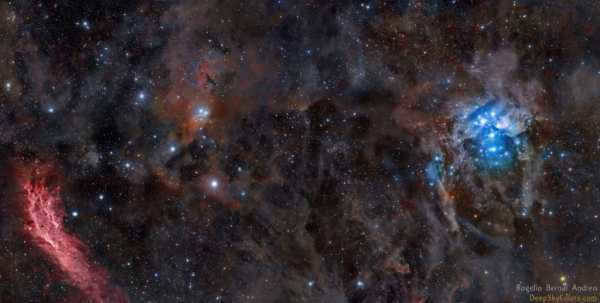

An image capturing the beauty of the California Nebula and the Pleiades cluster taken by Rogelio Bernal.
Located in the constellation of Perseus, there exists an emission nebula that shares its name with the well-known American state of California. This nebula is also recognized as NGC 1499 in astronomical catalogs. It was first discovered in the 19th century by the American astronomer Bernard, who observed it in the night sky.
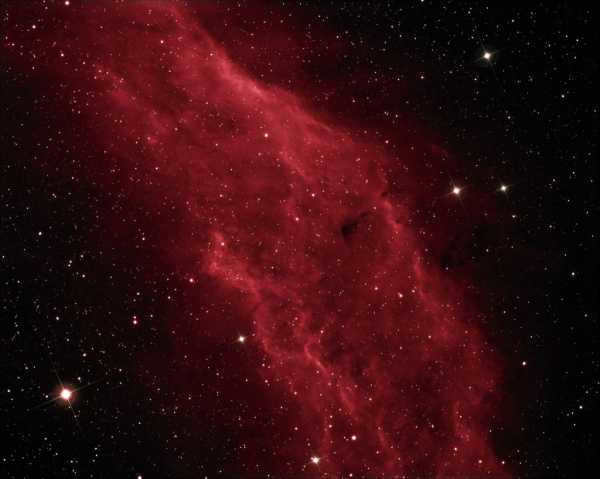

The California Nebula was captured by a hobbyist astronomer hailing from the United Kingdom.
Observing the California Nebula without specialized filters can be challenging due to its relatively low surface brightness. Situated approximately 1000 light years away from our planet, the nebula spans around a hundred light years in length.
The Nebula NGC 1333
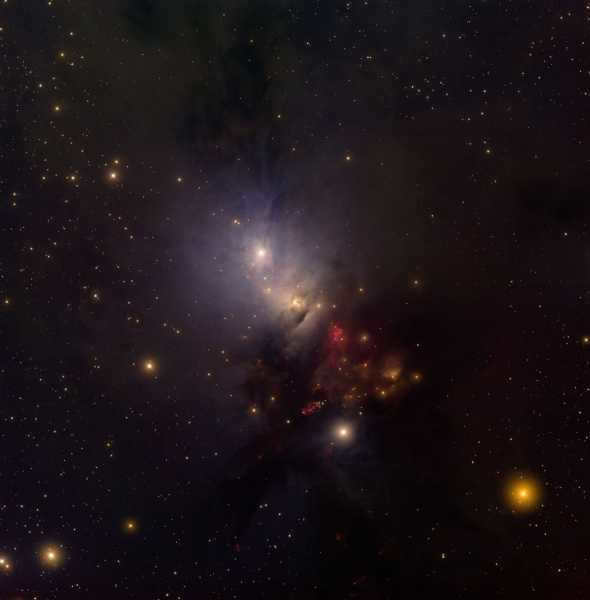
NGC 1333 is a nebula located at the same distance from Earth as the California Nebula. Unlike the California Nebula, NGC 1333 is a reflective nebula. When looking at the images, one can notice that this celestial object has a bluish hue. This phenomenon occurs because starlight reflects off interstellar dust, which in turn emits its own light.
NGC 1260: A Fascinating Spiral Galaxy
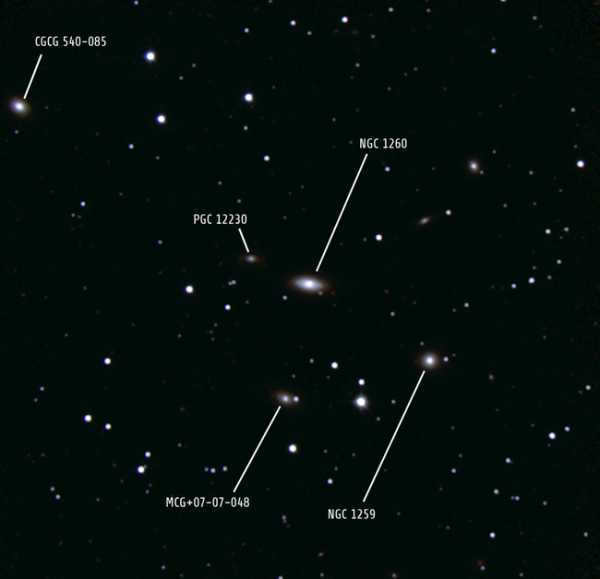
Galaxy NGC 1260 and the surrounding celestial bodies
Within the constellation Perseus lies the truly remarkable spiral galaxy known as NGC 1260. It was once the residence of the most brilliant supernova star ever observed by humankind, SN 2006gy. The cataclysmic explosion of this star was a hundred times more potent than any other supernova event. The peak of its luminosity was achieved after a staggering 70 days, when the total light emitted equaled the brightness of an astonishing 50 billion suns. Situated a staggering 238 million light years away from Earth, it is within the boundaries of galaxy NGC 1260 where this extraordinary burst of power took place.
The Perseids – the meteor shower that has gained worldwide recognition
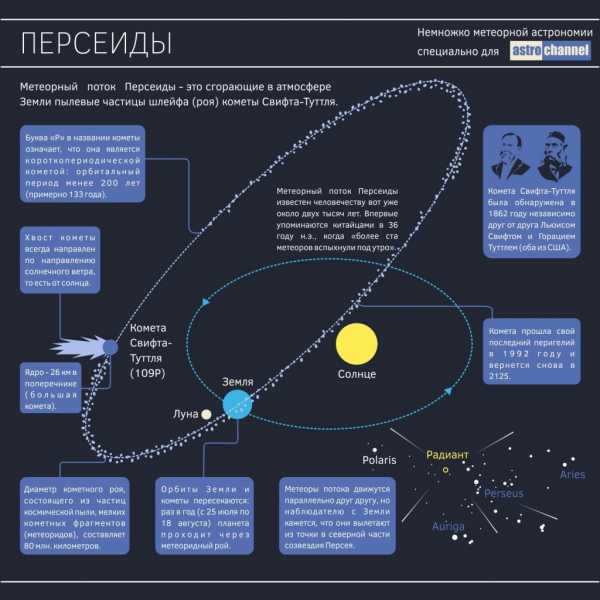
The Perseid meteor shower is the most dazzling summer event, visible in the Perseus constellation during the nights of August. This phenomenon occurs when the Earth passes through a trail of tiny dust particles left behind by the Swift-Tuttle comet. These minute particles, similar in size to grains of sand, rapidly disintegrate in our atmosphere, creating a stunning display of falling stars. The intensity of the meteor shower gradually builds up and then subsides.
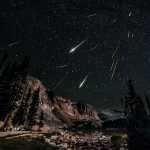
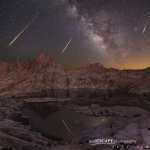
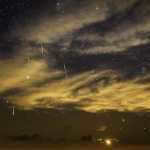
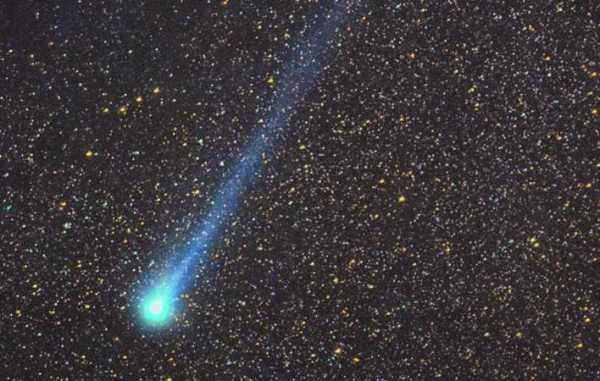
Comet Swift-Tuttle itself comes near our planet just once every 135 years, while its tail intersects with Earth on a yearly basis. As the comet gets closer to the Sun, it disperses fragments of ice and dust into space. The dust particles, moving towards the Sun, enter our atmosphere and burn up, creating a dazzling display of star-like flashes in the night sky. Typically, the Perseids meteor shower is visible from mid to late August. During this time, an observer can witness an average of 60 meteors per hour.
History
The origins of the name of this constellation can be traced back to ancient Greek myths, as it was described by a Greek scientist and has a long history. On ancient maps, the constellation was depicted as a man holding a rounded object, and it is believed to represent the mythological hero of ancient Greece, Perseus. Despite not being the brightest, the stars in this constellation are easily distinguishable by the human eye, and its age adds to its significance.
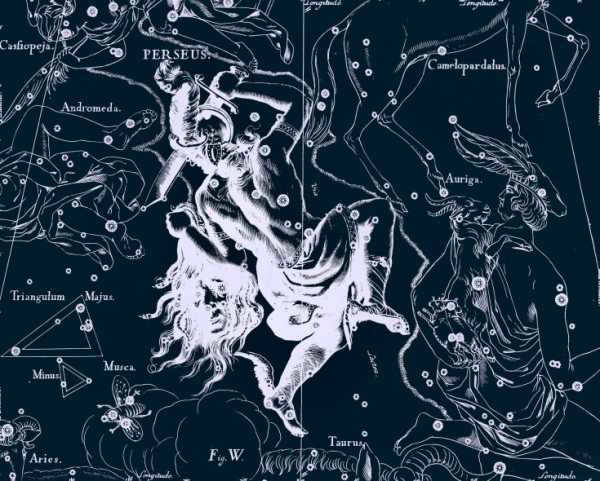
Jan Hevelius’ atlas of constellations features a stunning drawing of Perseus.
In addition to Perseus, there are several other well-known constellations with mythological backgrounds that surround it. These include Pegasus, Cassiopeia, Cepheus, and Andromeda. Together, they form a group of constellations that share a common storyline with the legend of Perseus. A bit further away, one can also spot Cetus, another ancient constellation that is directly connected to the story of Perseus.

